Picking up the Pieces




Ainzargul Totakhil sought a new life outside a war zone, but bullets still found him. His family wonders how they’ll go on.

 By Sarah Blake Morgan and Vibhav Nandagiri, p. 11
By Sarah Blake Morgan and Vibhav Nandagiri, p. 11









 Raleigh | Durham | Chapel Hill
June 28, 2023
Raleigh | Durham | Chapel Hill
June 28, 2023
Raleigh W Durham W Chapel Hill
VOL. 40 NO. 23
CONTENTS
5 A Holly Springs Pride Proclamation fails to mention the LGBTQ+ community. BY
MARIANA FABIAN
6 A $10 million allocation in Durham's recently adopted budget will go to rebuilding the storied Hayti district. BY THOMASI MCDONALD
9 The Raleigh City Council approved a controversial rezoning of Shaw University's downtown campus. BY JASMINE GALLUP
10 Raleigh has a unique opportunity to bring affordable housing and economic development to an underinvested part of the city with the purchase of the old DMV headquarters. BY JASMINE GALLUP
11 Ainzargul Totakhil sought a new life outside of the Afghan war zone. But in Durham, bullets still found him, leaving his family behind to pick up the pieces. BY
ARTS & CULTURE
SARAH BLAKE MORGAN AND VIBHAV NANDAGIRI
28 June music in review: New and forthcoming releases from Wye Oak, Phil Venable, and Django Haskins. BY BRIAN HOWE AND JORDAN LAWRENCE
30 A new exhibition at the Nasher Museum of Art explores the obsessive photography of Andy Warhol. BY HARRIS WHELESS
31 Durham artist Jim Lee's project at Pop Box Gallery has a lot of layers.
BY HANNAH KAUFMAN
32 Indiana Jones says goodbye to the silver screen. BY GLENN
MCDONALD
W E M A D E T H I S
PUBLISHER
John Hurld
EDITORIAL
Editor in Chief
Jane Porter
Culture Editor
Sarah Edwards
Staff Writers
Jasmine Gallup
Lena Geller
Thomasi McDonald

Contributors
Spencer Griffith, Carr Harkrader, Brian Howe, Kyesha Jennings, Jordan Lawrence, Glenn McDonald, Nick McGregor, Gabi Mendick, Shelbi Polk, Dan Ruccia, Harris Wheless, Byron Woods
Copy Editor
Iza Wojciechowska
Interns
Mariana Fabian, Hannah Kaufman, Iris Miller
CREATIVE
Creative Director
Nicole Pajor Moore
Graphic Designer
Izzel Flores
Staff Photographer Brett Villena
ADVERTISING
Publisher John Hurld Director of Revenue
Mathias Marchington
CIRCULATION
Berry Media Group
MEMBERSHIP/ SUBSCRIPTIONS
John Hurld
INDY Week | indyweek.com
P.O. Box 1772 • Durham, N.C. 27702 919-695-4848
EMAIL ADDRESSES
first initial[no space]last name@indyweek.com
2 June
28, 2023 INDYweek.com
ADVERTISING SALES advertising@indyweek.com 919-695-4848
© 2023 ZM INDY, LLC All rights reserved. Material may not be reproduced without permission. NEWS
Contents
3 Voices 4 15 Minutes 33 Culture calendar
THE REGULARS
COVER PHOTO BY ANDREA BRUCE FOR THE ASSEMBLY
Binki performs at the Cat's Cradle Back Room on Monday, July 10. (See calendar, page 33.)
PHOTO COURTESY OF CAT'S CRADLE
VOIC E S
Reclaiming the Pride and Joy of Resistance
From Pride to Juneteenth, marginalized people navigate retraumatization throughout the month of June as oppressors highlight our celebrations while gaslighting our people. It’s time to retake our agency.
BY DESMERA GATEWOOD backtalk@indyweek.com
As June comes to an end, marginalized people like me find ourselves in recovery from a draining dizziness. We’ve run through a carnival of corruption involving masterful public relations magicians, merry-go-rounds of promises of solidarity that change direction mid-ride, prizes for rigged mind games, and sugarcoated lies about a relationship between abused people and those in privilege and power. This corruption carnival, themed as a joyful display for highlighting oppressed people through acknowledgment of Juneteenth and Pride, appropriates celebrations created by and for persecuted populations. These occasions are intended for expressing joy, releasing pain, commemorating resistance, and acknowledging generations of tenacious people. But they have devolved into a performative opportunity for bad actors to feign solidarity, assuage guilt, and, of course, take part in the classic American convention: making a profit at the expense of the historically victimized.
As we saw this year, companies and brands such as Target and Bud Light tiptoed between pride and prejudice.
In 2019, we were dazzled into purchasing counterfeit solidarity souvenirs: rainbow pajamas and queer-affirming aluminum beer bottles. Four years later, these two scam artists now ask for our sympathy as they abandon their Pride merchandise displays and transgender spokespeople in the face of queerphobic naysayers, justifying their cowardice as caution.

I remember visiting another vendor at this sideshow and being handed a latte by a beautifully queer barista, proudly sporting a Pride shirt with their company logo: Starbucks. Even through the swirling chat-
ter about bashing unions and underpaid workers, Starbucks posed as having “pride” in supporting its LGBTQ+ staff’s identities.
But Starbucks contradicts its espoused solidarity with LGBTQ+ workers through its labor violations. Today, Starbucks workers around the country are striking in response to what they’ve reported as an attack on Pride celebrations, and union workers have shared that they’ve been forced to remove Pride decorations and flags at stores across the country. Starbucks, a once “proud supporter of LGBTQ practices,” appears to be another abuser, gaslighting oppressed people through a confusing funhouse of shifting floors and distorting mirrors.
Where are these companies, in their celebrations of Pride, “highlighting” the contributions of Black and Latine leaders like Marsha P. Johnson, Sylvia Rivera, and the army of Stonewall warriors, who, over the course of five days in Greenwich Village in June and July of 1969, fought back against violent police harassment and protected their queer communities? Where were the Marsha “P.J.” sets? Beer bottles commemorating Rivera’s Molotov cocktails? QR codes to learn about the origins of ball, voguing, and house music? Bud Light and Target were absent in elevating the actual story of Pride—a commemoration of unapologetic queer gangster—because they were never about that life.
Let’s look now at the newfound interest in Juneteenth, a century-and-a-halfold liberation celebration that everyone, except for Black people, overlooked until 2020. Somewhere at the intersection of the white guilt and the Black grief that reverberated following the 2020 killing
of George Floyd, there was a glimmering opportunity for disingenuous people in power to gain favor with the abused.
Perhaps the most salient hypnotizing magician in this sideshow is Amazon, which finds itself mired in legal action on behalf of both workers and consumers.
Amazon has set low expectations for its participation in liberation holidays; just as it doesn’t give its delivery workers a bathroom break during the workday, it doesn’t give workers a paid day off for Juneteenth.
Still—and I wish I was kidding—Amazon hosted a Juneteenth concert that people
could only access through streaming on their Amazon Prime Music account.
But it’s Bank of America, perhaps, that has the more egregious track record for participation in the cycle of abuse. In 2022, ironically, Bank of America audaciously tweeted, “Juneteenth is a moment to reflect and learn. Today, we honor all those who have fought and continue fighting for racial equality. Their resilience and determination is unmatched. As we learn from the past, we can continue pushing for progress and change.”
But since 2011 alone, Bank of Ameri-
INDYweek.com June 28, 2023 3
Desmera Gatewood and Joselle Torres strike a pose at the Durham LGBTQ Center’s 2022 Pride Celebration. PHOTO COURTESY OF DESMERA GATEWEOOD
ca has continuously found itself on the losing end of litigation aimed at resolving its heinous contributions to systemic racism and classism. It has been ordered to pay millions for loan discrimination against Black and Latino customers. It has been sued successfully for racially motivated hiring discrimination. There’s recorded evidence of intentional negligence of foreclosed properties in Black neighborhoods in 201 American cities. And a study shows that Black employees of the bank have less than a quarter of the chance that their white colleagues have to ascend to executive-level leadership.
Fortunately, even as we circulate annually through these rickety rides, as operators abandon the levers and leave us dangling, there’s hope for those who make it to the end and exit the gates.
June remains a sacred month for authentic Blackness, queerness, and artistry, especially here in Durham.
ty members to incorporate the history of Durham’s Hayti Heritage community in the flow of the celebrations. This year, I, along with two other powerful sisters from Durham, gave consecutive presentations to a crowd who stood on the back steps of the Hayti Heritage center. We educated an audience on how the history of the Hayti—intentionally named to represent its similarities to the self-liberated country of Haiti—directly reflects the self-determination of Black people, following centuries of enslavement. We referenced, for example, how the veve, that for 130 years has rested atop the Hayti’s steeple, is a symbol that pays homage to Erzulie, the Haitian Mother Mary and Goddess of Love.
Achieving such empowering, sacred, and uplifting traditions requires the institutional knowledge of Black communities and their dedication to preserving the national and local history of places like Durham. The Juneteenth Collective’s events symbolize Black familial collectivization, as they bring the con-
Joe Romeo, musician joeromeomusic.com
BY IRIS MILLER backtalk@indyweek.com
How did you get into the Carrboro music scene?
My first idea about Carrboro, or really, Chapel Hill, was from bands from here in the ’90s that I liked: Superchunk, Archers of Loaf, Polvo, Pipe, and many more. That put it on the map for me. How has the scene evolved over the course of your time here, since 2002?
For this, we can acknowledge local Black powerhouses such as Jesse Huddleston and Aya Shabu who assume leadership roles in coordinating the Durham LGBTQ Center’s Pride celebration and the Durham Juneteenth Collective’s Juneteenth events, respectively.
“As one of the Black and queer co-chairs of Pride: Durham, NC, I can confidently say that we are intentional in protecting local LGBTQ+ people and preserving LGBTQ+ culture, particularly when it involves local Black, brown, and Indigenous folks,” Huddleston tells me. “Lots of our vendors and talent authentically represent Durham, and we do our best to center those most marginalized and impacted by systems of injustice.”
Similarly, for three consecutive years I’ve taken part in the Village of Wisdom’s Hayti Heritage Juneteenth celebration, just one event in a series that take place around the city. I watched as Village of Wisdom’s Shabu, a central curator, consulted with communi-
sistently dedicated community residents to participate in a celebration created of, by, and for Black people.
Although mainstream America has made a total mess and mockery of Pride celebrations, and seemingly follows the same path with Juneteenth, we have an opportunity to learn from the past and retake the wheel. We won’t insult change-agency by asking for an audience as we sit in a state of “reflective learning.” As with any festival, carnival, or sponsored event, we must have rules for admission into our celebrations. For those who’ve sought to make profit from our abuse and maintain power through our persecution, we say:
No celebration without compensation.
No celebration without reconciliation.
No celebration without memorialization.
No celebration without self-determination.
No highlighting while gaslighting. W
Desmera Gatewood is a neurodivergent, Black, non-binary writer and organization development practitioner. They get joy from parenting, sudoku competitions, and group facilitation.
It seemed like [back then] there were more people playing music. It felt like there were more bands because it was cheaper to live in Chapel Hill and Carrboro for musicians, and so obviously that made a good music scene. Slowly, over my time here, it’s become less and less affordable, and a lot of the people that were like me are no longer here, for whatever reason. Do you think there has been an exodus of artists, or are artists no longer pulled to the area?
I would assume so based on my personal experience. People, artists, people who live off art generally go to where the least interference with art will be, right, like [regarding] housing and simple things like that, the cost of living. I’ve certainly known a few people who’ve been priced out.
Tell me a little bit about your new album I recorded the basic tracks for this in 2016 and kind of forgot about it because I was doing other stuff—and I didn’t love how it came out in the recording. But I loved the drums, played by Clay Anderson, who played in [our band] Fake Swedish with me, and so I went back to those tracks with Logic Pro and all its abilities for mixing, and I went through those and started from those drum tracks, and built it up. I completely redid everything else, and I kept a few Eric Haugen guitar tracks in.
How has living in North Carolina shaped your music and songwriting?

I’ll always love it here because I came here and it was so different from where I’d grown up in New Jersey, in terms of space and the way that you could live. I didn’t have to have seven roommates, for example, like if I’d moved to New York. It helped in the sense that I had a chance to relax and look at nature and just live cheaply. I lived an artistic lifestyle when I was in my twenties here ’cause it was very possible. And I took advantage of everything Carrboro had to offer, because it was and is a great town. What do you think you’ll miss about the Triangle music scene when you move away? Unlike the other places I’ve lived, people actually seem to root for you here. The other musicians, you know? The ones I really have a lot of respect for, who seem to respect me, it felt like we wanted to help one another rather than compete. It’s a little slower and friendlier here. I’ll miss how nice everyone is.
How do you think the community can help to remake an environment where artists can thrive and preserve the rich musical history here?
Any community, especially one with such a reputation for progressive thinking and artistic … fomentation … any town that wants to engender that needs to provide places for people to live, [not] make them work every free second of their lives, because they won’t be doing what it is that they’re supposed to be doing—making art—which we need! And if everything is expensive, who’s going to make it—corporations?
AI?
AI. Ugh.
4 June 28, 2023 INDYweek.com
PHOTO BY BRETT VILLENA
This interview has been edited and condensed for clarity. Visit our website to read the full version of this article.
Carrboro 15 MINUTES
“Achieving such empowering, sacred, and uplifting traditions requires the institutional knowledge of Black communities and their dedication to preserving the national and local history of places like Durham.”
Pride Denied
In Holly Springs, a Pride Proclamation fails to mention the LGBTQ+ community.
BY MARIANA FABIAN backtalk@indyweek.com
On June 13, outside of the Holly Springs Police Department while a town council meeting took place inside, dozens of residents of the Wake County town gathered with rainbow flags and colorful signs to protest the council’s recent Pride Month proclamation.
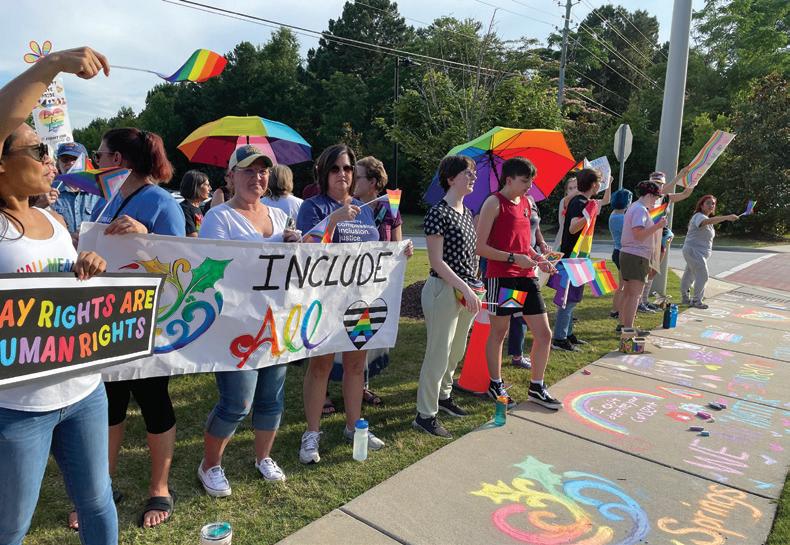
This is the first year the Holly Springs Town Council has issued a Pride proclamation, but something is glaringly missing: the language of the proclamation leaves out any mention of the LGBTQ+ community or sexual orientation in general. While a Pride proclamation has been a goal for advocates across the town (the Holly Springs council came under fire last year for refusing to sign on to a countywide nondiscrimination ordinance and made no recognition of Pride Month), residents say what they got was not what they expected.
“It was right around the rush hour at the end of the workday,” says resident Jack Turnwald, a longtime LGBTQ+ activist, of the protest. “We had lots of cars driving by, honking, people waving and smiling out of their cars. It felt like we may not have been getting the words we wanted from our mayor, but we were getting a lot of affirmation from our community.”
Turnwald says the town’s gesture this month raised more questions than answers for them.
“On June 6, the agenda came out and there was a small piece there that said there was going to be a Pride of Holly Springs Proclamation, and immediately people started kind of asking, ‘Well, what does that mean?’” Turnwald says. “‘Pride of Holly Springs’ sounds a little different than just your standard Pride proclamation. We’re like, ‘Is this we’re proud of our town? Is this about Pride? What’s the situation?’”
The situation soon became clear.
“When you opened up the proclamation itself, there
were many comments about diversity and celebrating different components of diversity in the town,” Turnwald says. “But none of the components listed included the LGBTQIA community.”
Turnwald says this made the proclamation feel much more backhanded instead of inclusive or affirming. Holly Springs mayor Sean Mayefskie did not respond to the INDY’s request for comment, and neither did four other members of the Holly Springs council. But Mayefskie issued a statement to media outlets in response to concerns raised from the community about the proclamation.
“This was always intended as a celebration of inclusion, a statement against discrimination,” Mayefskie said. “It’s a great first step. My door is always open to residents who want to have a dialogue about any issue, and I look forward to hearing feedback on this over the coming year.”
Aaron Wolff, the lone Democrat on the town’s six-member council, said why the council would ignore the LGBTQ+ population in its Pride proclamation “continues to be a mystery” to him.
Omitting the LGBTQ+ community from the proclamation “completely cut out the heart of what Pride represents,” Wolff wrote in a statement to the INDY
“It was described as a step forward, but to me it’s more like we are running in place, all while our LGBTQ community goes without the recognition and protections that they rightfully deserve,” Wolff added. “I believe there is a way forward that serves our LGBTQ community and protects the rights and beliefs of all Holly Springs residents, but it will require leadership and cooperation from our council which, until now, has been sadly lacking.”
The demonstration earlier this month was an opportunity for activists to make their voices heard and reaffirm their stances to the town’s governing body concerning LGBTQ+
rights. Whether it was friends, allies, parents, grandparents, teachers, or students, many of the demonstrators were there to show their support for the cause, Turnwald says.
Adam Macaluso, another Holly Springs resident, says it bothers him to live in a society where anyone’s voice is not heard. Macaluso says he understands the value of being heard, from his own experiences and those of others.
“Why are we comfortable removing [a group] from the whole point of what the definition of the Pride event should be?” Macaluso asks. “It really surprised me how it emotionally affected me. And I didn’t expect [the protest] would move me as much as it did. But I was standing there with my hands in my pockets and tears streaming down my face for the first 10 or 15 minutes. I was battling and trying to understand my feelings. I felt so confused and so happy.”
Turnwald says it was beautiful to see the demonstration as an act of building community and spurring momentum.
“There were people who showed up who maybe would have been afraid to show up before on their own, and now they feel like they have people to show up with,” Turnwald says. “This isn’t just a moment in time. It’s a continuous movement in our town. And it gives me hope for some of the negative legislation we’ve seen across the country.”
As for the language of the Pride proclamation, Turnwald says there are plenty of great examples that Holly Springs, in the future, can model its proclamation on, like those in Cary, Apex, or Morrisville. It doesn’t have to be something complicated, Turnwald says, and an amended version should include mention of the LGBTQ+ community. They say LGBTQ+ residents shouldn’t have to wait another year for a proper proclamation.
“This is where we start to change that tide by changing our own small communities,” Turnwald says, “by continuing to be vocal, by continuing to show up, and not giving up.” W
INDYweek.com June 28, 2023 5 N E W S
Holly Springs
Protestors outside of Holly Springs
Police building PHOTO COURTESY OF JACK TURNWALD
Resurrecting Hayti
The Durham City Council’s recently adopted budget includes $10 million to rebuild the storied district.
BY THOMASI MCDONALD tmcdonald@indyweek.com
Last spring, three months after her historic election as Durham’s first Black woman mayor, Elaine O’Neal pretty much promised to rebuild Hayti, one of the nation’s most important Black neighborhoods during the Jim Crow era.
The long-deferred dream of restoring one of Durham’s most storied neighborhoods moved closer to reality this month.
Last Tuesday, one day after the Juneteenth holiday, Durham City Council members approved a $610 million budget for the new fiscal year and allocated $10 million to revitalize Hayti, the traditionally Black community that sits in the eastern shadow of downtown, to “help create a sense of place for this historic area,” according to the City of Durham website.
City officials added that the funding “will support a variety of efforts, including residential and commercial real estate programs, small business support, and street, sidewalk, and landscape improvements.”

The funds to rebuild have been a long time coming.
It’s been decades since the broken promises of a federal urban renewal program during the 1960s devastated Hayti. Hundreds of businesses and thousands of homes were bulldozed to make room for the construction of Highway 147 that cleaved the heart of the community.
North Carolina Central University historian Jerry Gershenhorn noted in his biography Louis Austin and the Carolina Times that prior to its destruction, many Blacks viewed Hayti, with its 4,000 homes and 500 businesses, “as a vibrant though poor African American community which suffered because of overcrowding and inadequate housing.”
Gershenhorn explained that in 1962, voters approved an $8.6 million bond referendum to finance water, sewer, and street improvements in the Hayti district. The goal, per recommendations by UNC-Chapel Hill’s Department of City and Regional Planning, was to clean up and modernize 200 acres of Hayti to improve the city’s tax base and make room for the planned east-west expressway.
Highway 147 was built, but the rebuilding of homes and businesses in Hayti never followed. Despite the destruction, the community is still home to a host of stable institutions, including the Hayti Heritage Center, the Stanford L. Warren Library, Student U, W.D. Hill Recreation Center, the Lincoln Community Health Center, and NC Central University, along with schools, shopping outlets, and churches. But after the spectacular failure of urban renewal, it was left vulnerable to crime, transitory housing, and underfunding that paved the way for gentrification.
The $10 million to rebuild the community might be a drop in the bucket, but the money—the bulk of which comes from the Biden administration’s American Rescue Plan Act of 2021 (ARPA), along with other city and county joint funding to address infrastructure issues—represents tangible hope.
This month, Anita Scott Neville, the director of Hayti Reborn, a revitalization project with deep roots in the community, told the council about the importance of “the city’s response to the repair of the spiritual and physical harm to Hayti and its residents.”
The “healing that will result [from Hayti’s revitalization] will effectively drown out the residual pain from the urban renewal of the 1960s, and echoes the resurrection of our
heritage for generations to come,” Scott Neville told the council days before the final budget was approved.
“I’m so proud of the community,” O’Neal told the INDY last week. “They have been patiently waiting, and the waiting needed to be over.”
To talk about Hayti today among scholars and longtime residents is akin to visiting a onetime paradise in comparison to the issus that now bedevil the community.
Hayti was one of the nation’s most important Black neighborhoods during the Jim Crow era, lauded in the early 1900s by W.E.B. DuBois and Booker T. Washington, who rarely agreed on anything. Perhaps that’s because Hayti embodied Washington’s philosophy of enterprise and DuBois’s emphasis on education.
The sociologist E. Franklin Frazier, in his 1925 essay “Durham: Capital of the Black Middle Class,” described the Bull City as the capital of the Black bourgeoisie. A place “not where men write and dream; but a place where Black men calculate and work.”
“The Negro is at last developing a middle class,” Frazier wrote, “and its main center is in Durham.”
“It was the undisputed center of Black capitalism and entrepreneurship … the leading Black Wall Street in America,” Henry McKoy told the INDY in 2021. “It was known as the ‘City on the Hill for Blacks,’ and ‘Capital of the Black Middle Class.’”
McKoy is a founding member of Hayti Reborn. The Durham Housing Authority rejected his bid to create an affordable housing, business, and educational complex in Hayti last year. McKoy was director of NC Central University’s entrepreneurial program, and last year accepted
6 June 28, 2023 INDYweek.com N E W S Durham
Heritage Square in the Hayti neighborhood
PHOTO BY BRETT VILLENA
a position with the Biden administration to direct a newly created federal division to fund communities all over the country that are historically disadvantaged, marginalized, underserved, and overburdened by pollution—in other words, neighborhoods just like the Hayti district.
Two years ago, McKoy said the loss of Hayti’s presence over the decades was incalculable.
“We are talking about literally billions of dollars in lost economic value for the Hayti community that could have resulted from expanding as the macroeconomic landscape expanded,” McKoy told the INDY “Black Durham was denied the economic standing that it had built over the course of the century before the [east-west expressway] came through.”
Two years after the U.S. Supreme Court outlawed segregation in public schools, President Dwight D. Eisenhower signed into law the Federal-Aid Highway Act of 1956 that authorized the construction of a 41,000-mile interstate highway system. The interstate highway system is largely to blame for the destruction of formerly prominent Black communities throughout the United States.
The destruction of Hayti to make room for Highway 147 has its mirror images in Black communities all along the nation’s freeway corridors: South Central Avenue in Los Angeles, Beale Street in Memphis, 18th and Vine in Kansas City, Old City in Knoxville, the Third Ward in Houston, and the Hill District in Pittsburgh.
The late celebrated Durham historian John Hope Franklin grew up in Tulsa and was only four years old in 1921 when a white mob destroyed 35 square blocks of the Greenwood district, where he lived with his family.
I was writing “Hayti’s Ghosts” for The Independent, which preceded the INDY, in 1997, when I had the good fortune to bump into Franklin. I shared with him my thoughts on what appeared to be a near-conspiratorial destruction of prominent Black communities throughout the United States. The vague, unfulfilled promises of redevelopment in Hayti and its kindred communities along the anatomy of the American landscape have proved to be nothing less than the economic murder of Black America.
“I don’t know if it happened to all of them,” Franklin replied after listening to my observations. “But it happened to enough of them.”
One year later, Franklin told me that Tulsa’s Greenwood district was decimated by a highway, Interstate-244, just as Hayti was destroyed by Highway 147. It was rebuilt after the white terrorism in 1921, but last
year, Greenwood residents called for its removal to reverse 100 years of damage to the Black community.
“Blacks recovered from the riots, but not from [the interstate],” Franklin told me for a second story I wrote, “Holding Out Hope,” for The Independent. “[I-244] destroyed it in a way the riots could not change it.”
It is against that backdrop that Durham’s city leaders approved funding to rebuild Hayti.
“I am so excited,” the city’s mayor pro tem, Mark-Anthony Middleton, told the INDY. “This has been talked about for generations. This means putting real dollars on the table. It’s not a lot. But it’s a significant amount. This is historic.”
O’Neal agreed.
Hayti neighborhoods, she says, have been left out of the city’s prosperity boom.
“Now they can actually sit at the table and they got a little bit of money. That’s
speak with one voice,” O’Neal says.
O’Neal also cautions, “When you get to spending that kind of money it can go fast.
“I’m hoping we can get the best bang for the buck.”
Funding for the revitalization project is happening at a fortuitous moment in the Fayetteville Street corridor’s history. There’s the Durham Housing Authority’s rather controversial planned development of Fayette Place, a 20-acre parcel of land that has been earmarked for the construction of 774 affordable housing units.
There’s also the planned redevelopment of the near-abandoned Heritage Square shopping center that sits between the 600 block of Fayetteville Street and the 400 block of East Lakewood Avenue. The eroding commercial strip was purchased last year by Sterling Bay, a Chicago-based development firm with deep pockets, whose officials announced the project as a joint venture with another Chicago firm and New York developer.
Then there are the hundreds of luxury apartments built by Charlotte developer CitiSculpt on more than 12 acres of land along South Roxboro and West Pettigrew Streets that was once the commercial retail hub of the Hayti district.
Moreover, North Carolina will host the World University Games in 2029, when 7,000 athletes from over 150 countries and more than 600 universities will compete at venues throughout the state’s university hub region: in Raleigh, Durham, Chapel Hill, Cary, and Greensboro.
a big thing for the community,” she adds. “The community is going to have something to back it up. It’s a great start.”

O’Neal explains that individual residents won’t receive the funds. Instead the city council will consider revitalization proposals from community groups, including the Historic Fayetteville Street Corridor Planning Group, which is spearheaded by Larry and Denise Hester, who own the Phoenix Square and Phoenix Crossing shopping centers; former mayor William “Bill” Bell; and Hayti Promise, a nonprofit community development corporation started by the Hayti Heritage Center.
“I think we can all come together and have a grand vision that hopefully we can contract,” the mayor says.
O’Neal and Middleton value the currency of input from rank-and-file community members about the revitalization project.
“My hope is they will come together and
O’Neal says some of the events will take place on the campus of NC Central University, and she says the school’s chancellor, Johnson O. Akinleye, hopes Hayti will be “a destination spot when the athletes come in … to help the campus and Durham.”
“Hopefully, Hayti will look really different in 10 years, in a good way,” O’Neal says.
Days before council members approved the funding, several community members joined Scott Neville in the council chambers. During a June 5 city council work session, they spoke about the importance of rebuilding the district.
“It’s kind of difficult for you to see the vision of what took place,” Hayti resident Gordon Matthewson told the council about Hayti before it was demolished. “To actually see the economics of staying in your own community, and also working with your own people for whatever you need. But that was what was provided.”
“Hayti is such a unique area,” another resident, Faye Calhoun, said. “It’s African American heritage that we must be proud of. We must preserve, and we must recognize and acknowledge.” W
INDYweek.com June 28, 2023 7 Local news, events and more— in your inbox every weekday morning Sign up: I N DY D A I LY SIGN UP FOR THE Wake up with us
“Now they can actually sit at the table and they got a little bit of money. That’s a big thing for the community. The community is going to have something to back it up.”
Best Triangle 2023 of the Orange & Chatham Counties
NEXT UP ARE ORANGE AND CHATHAM COUNTIES !
Nominate your favorite Orange or Chatham County bar, veterinarian, bookshop, museum— whatever it may be, there are over 100 categories in which you can profess your favorite Orange/Chatham County treasures. Later in the year we will vote among the winners from all participating regions to determine the Best of the Triangle for 2023!
Orange & Chatham Counties NOMINATIONS BEGIN
WEDNESDAY, JULY 19 TH
8 June 28, 2023 INDYweek.com
VOTE.INDYWEEK.COM
The most recognized award throughout the Triangle is back for 2023—
Growing Forward
In a split vote, Raleigh’s city council approved a proposal to rezone Shaw University’s downtown campus for future development.
BY JASMINE GALLUP jgallup@indyweek.com
Plans to expand and redevelop Shaw University’s campus will move forward this year after the Raleigh City Council approved the school’s rezoning request last Tuesday in a 5-3 vote.

The split vote brings a temporary halt to months of heated debate between Shaw University alumni, who are concerned about the future of the historically Black college, and administrators, who say welcoming private developers onto campus is the only way for the school to survive.
The redevelopment plan includes leasing some land on campus to developers—who could build new apartment or office buildings up to 30 stories high—to bring a much-needed influx of cash to the school. The possibility of new commercial construction on campus worries some alumni and nearby residents, though, who are concerned it could erase the college’s history and eventually, the institution itself. The neighborhood has already experienced rapid gentrification.
Still, Shaw University’s land in downtown Raleigh is its best resource, valued at between $160 million and $270 million as of 2019, according to reporting from The Assembly. Shaw University president Paulette Dillard says the redevelopment will include campus improvements to serve students, such as a new research center, urgent care facility, or library. In an attempt to assuage concerns, the universi-
ty attached an additional condition to its rezoning request this week: any new development is now required to include housing for students.
The vote on Shaw’s rezoning was decided by city council newcomer Jane Harrison, who was elected alongside three other new council members in November. Her fellow newcomers—Mary Black, Megan Patton, and Christina Jones—each voted against the rezoning.
Their three votes alone, however, weren’t enough to overrule those of Mayor Pro Tem Corey Branch (who made the motion to approve the rezoning), Mayor Mary-Ann Baldwin (who seconded), and established city council members Jonathan Melton and Stormie Forte, who each also voted in favor.
“I don’t come at this lightly, because I think this is a very emotional case for so many people at so many levels,” said Branch. “With that said, I have come to my conclusion on where I would like to move this.”
The vote that followed was unclear, with Melton and Forte raising their hands only slightly, and audience members applauding at one point as they thought the rezoning had failed. Harrison appeared hesitant to cast her yes vote. When she did eventually speak, it was after a long pause and a comforting gesture from Baldwin.
“I’ve just got to say a couple things,” Harrison said, visibly emotional. “I want to
thank everyone that’s here. This has been the absolute hardest case that has come to us. I care about what you all bring to the table. You have affected what this case looks like. You have affected me.”
Harrison, like many other council members who voted in favor of the rezoning, said her decision wasn’t easy, citing the “many points of view.” She also read a letter from a former citizen advisory council chair, Frances Lonette Williams, about the Prince Hall Historic Overlay District.
During the rezoning process, many residents argued that approving the request would endanger several historic buildings on and near campus, including the Rogers-Bagley-Daniels-Pegues House and the Charles Frazier House, located in the nearby Prince Hall Historic Overlay District.
Shaw University leaders pushed back saying they had never wanted to be included in the district in the first place, an argument that was backed up by Williams’s statement. Williams’s letter also mentioned that many property owners had not wanted to be included in the district but said that removing themselves from it turned into a contentious and burdensome process.
“I only read this letter to share just one other opinion that happens to be out there,” Harrison said. “We have received hundreds. I don’t see this is as a win-winwin-win. I want all the communities to be
a part of this.”
Harrison went on to say that she’s putting her hope in the idea that Shaw University will continue to work with the community to reach an agreement, specifically on plans for the campus mosque, which has been closed since March 2020 (even after the campus chapel reopened its doors following the COVID pandemic). Community members, however, find that unlikely.
The city council’s decision was met with boos, criticism, and widespread skepticism that Shaw University would take any action to include community input. Despite that, plans to reshape the campus will go ahead. As a result of public pressure, the university did add nearly 20 conditions to the rezoning request, rules it will have to follow when construction begins.
Significantly, those conditions include a requirement to hold community meetings once a quarter for the next three years; a requirement to rezone any property that is sold (although Shaw says it won’t sell any of its property); and the requirement that one of the first three new buildings must include housing for Shaw students.
The university has also agreed to allow an independent third party to check if the university’s historic buildings are impacted by construction. Readings from vibration-sensitive equipment will be sent out for review. W
INDYweek.com June 28, 2023 9 N E W S
Raleigh
Estey Hall PHOTO BY JADE WILSON
Community Opportunity
The sale of the old DMV headquarters to the City of Raleigh presents a unique new opportunity for affordable housing and economic revitalization in Southeast Raleigh. Can residents trust city leaders to get it right?
BY JASMINE GALLUP jgallup@indyweek.com
Isaac White Sr. knows exactly where the old state DMV headquarters used to be. It’s just a few blocks away from his longtime home in the Battery Heights neighborhood of Southeast Raleigh.
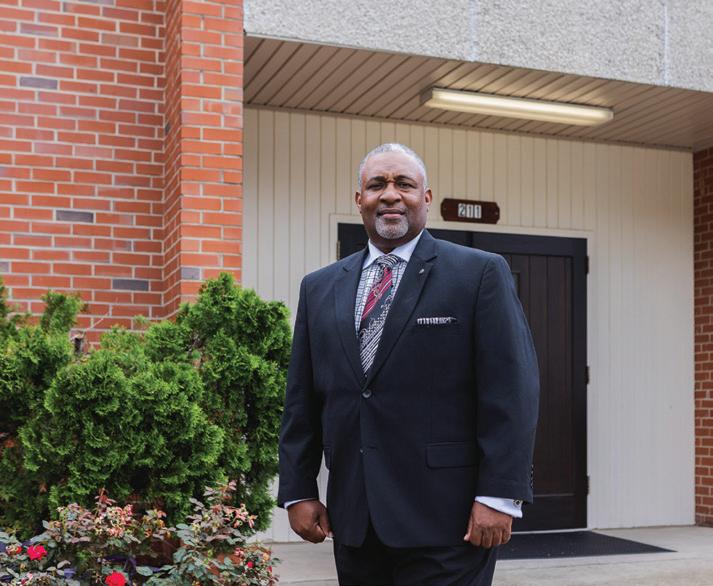
Today, the roughly six-acre property located at the corner of South Tarboro Street and New Bern Avenue is still home to an old, squat brick building, with a fading sign reading “N.C. Department of Motor Vehicles.” But the facility is clearly deserted, with an empty parking lot that has weeds growing through the cracks in the pavement.
It’s a remnant of the neighborhood’s powerful past, like many places in Battery Heights. As rich Raleighites move east and developers replace old one-story houses with $800,000 mini-mansions, residents in the historically Black neighborhood are struggling to hold on to their homes.
“Everywhere, things are getting more expensive,” White says. “[It’s] the gentrification. How [people] come in where they wouldn’t used to come in. That’s fine, now you’re desiring to live here, but my taxes double and triple.”
Property taxes aren’t the only costs going up in Southeast Raleigh. Basic commodities like gas and groceries are also more expensive, according to White. And it’s not just economics. White can see his community changing around him—his neighbors aren’t the same. His friends are being forced out.
“We worked hard to get over here,” White says. “Now you’re going to punish us? I love where I live at. I plan on living there until the Lord take me home. But I’m saying don’t penalize me and tax me to death.”
For White and other Southeast Raleigh residents, the state-owned plot of land off New Bern Avenue represents a huge opportunity. For years, Raleigh mayor pro
tem Corey Branch and other city council members have been talking with state officials about buying the property. Earlier this month, the city filed a $20 million bid. The North Carolina Council of State approved it. There are still a few more hoops to jump through, but the city will likely finalize the purchase soon.
This is important because large plots of land near downtown Raleigh rarely come up for sale, and when they do, there’s extremely high demand from developers, many of whom propose building 20-story apartment buildings or dense townhome neighborhoods to take advantage of Raleigh’s booming real estate market. The city’s purchase of the land means it can control what to do with it instead of leaving it to the whims of the private market.
Raleigh’s bid has raised a powerful, fragile hope among residents who want to see the property used for something good, a project that will help the community, such as low-income housing or a local grocery store (or both).
“A place where my kids can afford to live in [zip code] 27610. That’s what I would love to see,” says White. “The majority of people I know now, [they’re] having to go to Knightdale, Wendell, Clayton, Johnston County … because they can’t afford to be in that area. I understand we can’t go back, but we can recognize what’s going on here now.”
A short walk away, at Martin Street Baptist Church, Dr. Shawn Singleton says he’d like to see a business in the area, like a Lowes Foods or Sheetz gas station. The Village District, for example, has stores that attract people and incentivize them to spend money locally, he says. Why not replicate that in Southeast Raleigh?
“One of the things that is lacking in the
community is something that allows people to spend their dollars in their community,” Singleton says. “In order for people in that community to go grocery shopping, they have to relocate and go somewhere else.”
Singleton and other church leaders will likely have a large voice in the project since the church owns about 3.3 acres of property across the street from the old DMV headquarters. Before the DMV’s move to Rocky Mount in 2020—back when it employed hundreds of local residents—the church leased much of its property to the state for employee parking.
Branch, who represents many Southeast Raleigh residents in District C, says he’s already in conversation with church leaders who will help determine the future of the site. After the city officially purchases the property, the next step will be to hold conversations with the community to see what they want to be built, Branch says.
“Right now, I think we’re at a point of ‘Let’s put everything on the table,’” he says. “Let’s have a more meaningful conversation with the community and then go from there and see how we’re going to pay for what is built.”
There are some “key stakeholders” in the area the city wants to hear from, Branch says, like the local Wake County library and State Employees’ Credit Union. He adds that the city could potentially part-
ner with these or other nearby organizations—such as WakeMed, Wake Tech, or Saint Augustine’s University—to provide more medical care, job training, or education opportunities.
When Branch looks at the property, he sees a mixed-use development, he says: land that could be home to a combination of housing, retail, and office or institutional space.
“[The community needs] a grocery store. A place for business owners to operate … even doctor’s offices, attorney’s offices. Things that people need for their dayto-day life,” Branch says. “I mentioned the library. That [gives] access to a place to meet. And then there’s housing, looking at housing challenges and needs. So definitely something mixed-use is needed there.”
The project will likely be built in phases, with construction two to three years away, Branch says. Before shovels break ground, the city has to decide what it wants built on the site and send out a request for proposal (RFP) to developers and other organizations.
RFPs are essentially challenges to see who can come up with the best and most cost-effective plan for the city. The city council gives applicants guidelines—that the project should include a certain amount of affordable housing, for example. Applicants
Continued on page 14
10 June 28, 2023 INDYweek.com N E W S Raleigh
Dr. Shawn Singleton at Martin Street Baptist Church PHOTO BRETT VILLENA
Picking Up the Pieces
Ainzargul Totakhil sought a new life outside a war zone, but bullets still found him. His family wonders how they’ll go on.
BY SARAH BLAKE MORGAN AND VIBHAV NANDAGIRI backtalk@indyweek.com
Taj Bibi Ahmad Zai’s eyes are focused on the ornate red carpet. It’s one of the few things that reminds her of her old life—nearly everything has changed in the past six months.
Most of her 38 years were spent in a nomadic and rural province in eastern Afghanistan. Now, she finds herself in a third-floor apartment in Durham, surrounded by boxes, duffel bags, plastic containers, and an imposing tower of 24-packs of bottled water.
Ahmad Zai’s thin fingers fidget with eight dark-green Afghan passports, while her children vie for her attention. Five-year-old Asma clings to a large brown teddy bear in one hand and balances an overflowing bowl of Lucky Charms with the other. Nearby, one-month-old Ayeshah rocks in a bassinet.
The apartment was already home to her husband’s cousin Yousaf Mangal, his wife Raayata, and their five kids. After Ahmad Zai and her seven children arrived on February 10, the number of people living here grew to 15. Mangal and his wife picked them up from Raleigh-Durham International Airport—a reunion years in the making, but hardly what they’d pictured.

Ahmad Zai’s husband, Ainzargul Totakhil, had been living in the United States since 2016, working to save up enough money to bring her and the kids over. He’d recently earned American citizenship, and the couple had plans to build a new life together.
But Totakhil was shot and killed on December 30 while driving for Uber. According to Durham police, the 40-yearold was found dead in his car around 11:00 p.m. at the
intersection of Holloway Street and South Adams Street in East Durham, a predominantly residential area. There were no suspects, and six months later, the police say there still aren’t any leads.
It was Mangal who first learned of his cousin’s seemingly random murder when an officer called with the disturbing news on New Year’s Eve. For days, dread consumed him. He kept the information from the rest of Totakhil’s family. He made up excuses about why Totakhil wasn’t answering his phone. Could the news trigger a miscarriage for Ahmad Zai or a heart attack for Totakhil’s elderly parents?
But the family’s suspicions were growing.
“I think you’ve been lying to us,” Totakhil’s father told Mangal over the phone. “Because we’ve been having bad dreams.”
His loved ones knew something was wrong. But how bad could it be? Totakhil was in America, the land of opportunity.
The American idea
Totakhil had come to the United States seeking the promise of safety and security for his wife and children, a priceless commodity for someone who witnessed every botched phase and broken promise of America’s longest war.
But Totakhil believed in America. In 2007, as the United States dug its heels deeper into Afghanistan, he signed up to work for coalition forces. For nearly a decade, he and Mangal both served alongside U.S. Green Berets on a remote outpost near Paktia Province, filling various roles from base barber to interpreter.
INDYweek.com June 28, 2023 11 N E W S Durham
Taj Bibi Ahmad Zai and her newborn daughter PHOTO BY ANDREA BRUCE FOR THE ASSEMBLY
The trust built between a soldier and their interpreter is understood only by those who have experienced it firsthand. “They are a different breed. I expected him to fight alongside me just like anyone else,” recalled an active-duty U.S. Special Forces officer who worked with the cousins in 2011.
The Green Beret, who served five tours in Afghanistan, asked not to be named for security reasons, and says his Afghan interpreters saw more combat action than most American service members. “We were breaking bread with them. We were burying their dead,” he said. “When we were in an ambush, my Afghans were right next to me.” Which is why as the war entered its second decade, life in Afghanistan became more dangerous for Mangal and Totakhil. By 2013, four other cousins had been killed in combat while working for American troops. Countless friends and comrades had lost their lives in the war, and many of those still living endured a near-constant state of fear. Totakhil’s and Mangal’s devotion to the war effort made them, and their loved ones, enemies of the Taliban.
In June 2016, Mangal and his family were able to get Special Immigrant Visas (SIVs), a program established to provide a pathway to legal permanent residency for America’s wartime allies in Iraq and Afghanistan. They settled in Durham, and Totakhil joined them the following November. From 2009 to the beginning of 2021, the U.S. Department of State issued just over 22,000 SIVs to Afghans, most of whom had experienced immediate threats to their safety. The process wasn’t easy. Mangal’s Green Beret commander spent five years navigating bureaucratic red tape to get his visa approved. Many soldiers across Fort Bragg

were doing the same for their former interpreters; filing paperwork was the least they could do for the Afghans who’d risked their lives to support them.
Ahmad Zai and her children stayed behind when Totakhil left; he insisted on building a more stable life before bringing his family to the United States. And he did.
In the six years leading up to his death, Totakhil bounced between jobs in and around Durham. He drove for an airport taxi company, then found a job at a Japanese steak house. Totakhil eventually made his way into food delivery, working for Grubhub and Uber Eats, a marginally more lucrative position.
By 2021, Totakhil and Mangal were both driving full-time for Uber. Mangal, the more seasoned driver, had picked up a useful trick behind the wheel. He realized sharing stories of his military service with his passengers consistently earned him five-star ratings.
Totakhil adopted the tactic; every ride got him closer to reuniting with his family.
The wait
As Ahmad Zai waited with their children in rural Paktia Province, America’s military investments fell deeper out of political favor. When the United States finalized its hasty troop withdrawal in April 2021, the Taliban quickly moved into desolate areas like Paktia, easily appropriating land from a crumbling government.
By August, they were approaching Kabul, Afghanistan’s
capital and largest city. Many citizens still hoped for a compromise between the government and the Taliban. But on August 15, then president Ashraf Ghani fled the country, signaling the official end to talks of a coalition government. Hours later, the Taliban entered Kabul without opposition.
For many Afghans, there was nowhere left to go. Ties to coalition forces or diplomatic efforts placed targets on the backs of America’s wartime allies. Scenes of chaos ensued at Hamid Karzai International Airport as desperate crowds waited outside heavily fortified walls, battling heat and fatigue and constant abuse from Taliban soldiers.
The chaos did not let up inside. On August 16, three days into the evacuation, at least two people fell to their death while clinging to the wheel well of a U.S. Air Force C-17. A teenager was crushed by the same plane on the tarmac. On August 26, a suicide bomber detonated his vest, killing 169 Afghan civilians and 13 U.S. service members.
Mangal’s former commander likened the evacuation to Saigon, except much worse.
In the two weeks following the Taliban takeover, more than 120,000 Afghans managed to fly out of Hamid Karzai. Since August 2021, the effort dubbed “Operation Allies Welcome” has resettled nearly 90,000 in the United States, according to the State Department. More than 1,600 have come to North Carolina.
Ahmad Zai and her children waited more than a year under the Taliban’s tightening grip, quietly planning their escape.
In Durham, Totakhil’s financial outlook slowly brightened. While he went home to visit several times, the family was separated for six years before he decided it was time

12 June 28, 2023 INDYweek.com
Above, Ainzargul Totakhil PHOTO COURTESY OF HIS FAMILY Left, Taj Bibi Ahmad Zai and her children have moved into their own unit not far from Mangal and his family.
PHOTO BY ANDREA BRUCE FOR THE ASSEMBLY
to bring his wife and children to the United States. Last July, he flew back to Afghanistan to solidify their plans. He waited for months for their visas to be approved, calling Mangal, his former U.S. Army contacts, and the State Department weekly. By October, Afghanistan had become too dangerous for Totakhil to stay any longer.
He said goodbye to his newly pregnant wife and flew back to North Carolina. The baby they were expecting in the spring might be an American citizen if all goes according to plan, Totakhil told his cousin over the phone.
Just one day after Totakhil left Afghanistan, the State Department approved eight SIVs for his wife and children. They soon boarded a flight to a U.S. base in Qatar for their final processing.
Life as a family in the United States seemed to be within reach, and it came with help. SIV candidates are eligible for various short-term government assistance programs when they arrive. Cases are assigned to local resettlement agencies through the State Department. In North Carolina, two federally funded Department of Health and Human Services programs offer financial, medical, and employment services for up to 12 months.
But they wouldn’t need much help. Totakhil had been working hard.
Ahmad Zai waited in a large barracks room at Al Udeid Air Base in Qatar for her daily call with Totakhil. In Durham, Mangal overheard his cousin’s end of the conversations.
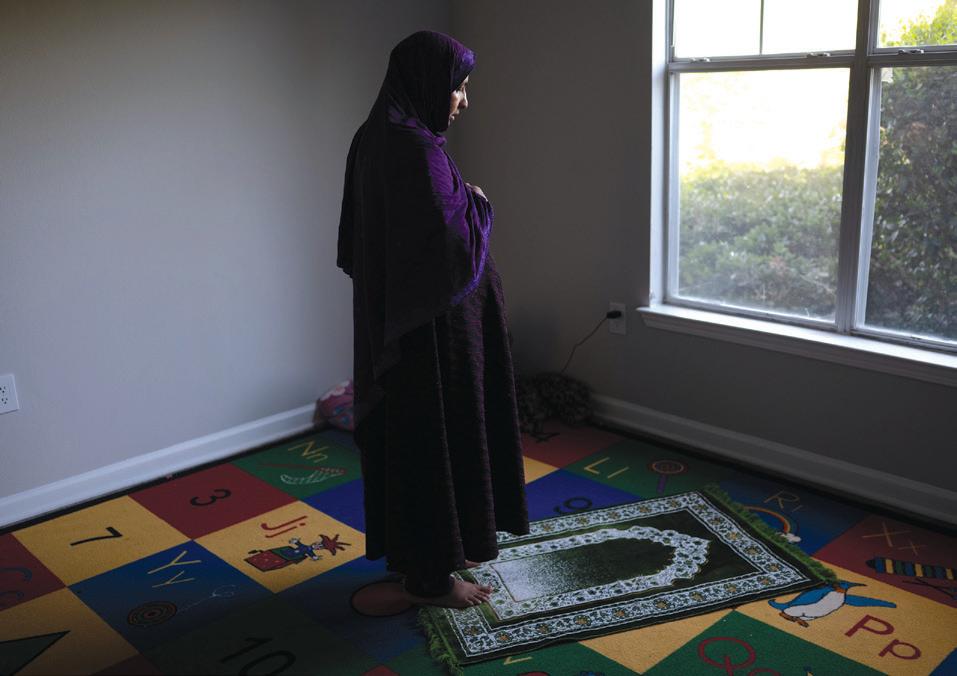
“I’m doing everything I can,” Totakhil would tell his wife. “It’s not in my hands.”
On November 15, he called with good news: he’d become an American citizen. He was hopeful his wife and children would soon join him in experiencing the same joy.
Each day at Al Udeid mirrored the one that came before. Ahmad Zai tried to keep the children entertained the best she could, but the months passed slowly as she and dozens of other hopeful Afghans worked to clear the necessary medical and security screenings before they could enter the United States. Her hope that what was waiting on the other side would be worth it carried her forward.
But on December 30, Mangal answered that late-night call from a Durham police officer.
“I was totally shocked. I thought he might be joking,” Mangal said. “This is America.”
It seemed unspeakably cruel that Totakhil had survived the brutality of war only to be shot and killed where he sought refuge.
When she learned his fate, Ahmad Zai wanted to return to Afghanistan—how could she live in a strange land without her husband by her side?
Their evacuation effort, however, was well under way. Mangal convinced Ahmad Zai, then seven months pregnant, to continue. The United States still seemed like the safest option, especially given her fast-approaching delivery. Totakhil’s death helped convince the State Department to expedite the effort. On February 10, Ahmad Zai and her children arrived in North Carolina. It had been 42 days since Totakhil’s murder.
The labyrinth
Ahmad Zai tries to maintain hope her children will have more than she ever did, something her husband believed. She’d never learned to read or write, and under the Tal-
iban’s ban on educating girls, her three daughters likely would not have either.
Asked what she wishes she could have learned in school, Ahmad Zai replies: “Everything.”
She looks down at her baby girl, a new American born nine days after she arrived. “She can do everything,” Ahmad Zai whispers.
But her hope is slowly languishing in a system struggling to keep up with their needs. Setting aside the unresolved police investigation, more immediate needs arise like providing for eight children in a new environment that couldn’t be more foreign. The support they expected and benefits often allocated to those with refugee status have not come.
Newly arrived refugees are often assigned to local resettlement agencies, private nonprofit organizations tasked and funded by the federal government to facilitate a family’s transition to the United States. In the Triangle area, four refugee resettlement organizations serve families. One is World Relief Durham, the agency that worked with Mangal and Totakhil. Their case workers coordinate housing assistance, school enrollment, and other essential services like a temporary, government-funded stipend to ease a family’s adjustment to the United States.
Mangal expected the same assistance would be offered to Ahmad Zai and her children once they arrived, especially given the horrifying circumstances. Day after day, he waited for their caseworker to call back. When the phone didn’t ring, he became Ahmad Zai’s only lifeline. He gave up driving for Uber almost completely as he spent days applying for social security cards, attempting to enroll the kids in school, and searching for rental properties.
After a month, Mangal learned his cousin’s family wasn’t
INDYweek.com June 28, 2023 13
“I was totally shocked. I thought he might be joking. This is America.”
Taj Bibi Ahmad Zai PHOTO BY ANDREA BRUCE FOR THE ASSEMBLY
eligible for the same assistance. As Adam Clark, World Relief Durham’s executive director, explains, Totakhil’s family is known as a “walk-in” since they entered the country “independently and not through traditional pathways.”
While the State Department initially granted the family SIVs, when Totakhil received his citizenship in November Ahmad Zai and her children became eligible for a family-sponsored visa instead. Entering as the family of a citizen meant they did not have access to the aid refugee resettlement organizations like World Relief typically provide. Totakhil’s untimely death left his family navigating a peculiar predicament.
The State Department’s Reception and Placement Program offers $2,375 in assistance to qualified SIV recipients and refugees during their first three months in the United States. The funds are distributed through local agencies such as World Relief and can be used for resettlement costs such as rent, food, employment assistance, school enrollment, and legal services. A State Department spokesperson told The Assembly that recipients “must be determined eligible based on the type of visa issued.”
Aid also exists for qualifying new arrivals from programs funded by both state and private organizations and can sometimes offer assistance for up to five years.
Totakhil’s family’s initial request for any type of aid was denied, but Clark said his organization is still actively attempting to help. “Once given the go-ahead, we plan to do so.”
Legal challenges are nothing new for World Relief, which like many resettlement organizations has been inundated with new Afghan arrivals since the August 2021 withdrawal. “We’re designed for long-term resettlement support, not disaster assistance,” says Clark. World Relief had to quickly overhaul its meticulously crafted resettlement plans; every week, a new family was arriving, most of them with small children.
Clark says the system wasn’t well set up for the influx; changes in immigration policy under the Trump administration led several refugee resettlement organizations to downsize or close altogether. World Relief Durham stayed afloat by offering new programming and diversifying services. It’s provided aid to more than 200 new Afghan arrivals in the last two years.

Strength and survival
When Mangal arrived in 2016, the Spe-
cial Forces officer he served alongside in Afghanistan would often visit. He and his wife would drive from Fayetteville and pick up Mangal and his family for a day at Carowinds.
He proudly watched his former interpreter’s children quickly learn English and embrace life in the United States. He knows the same will happen for Totakhil’s family if they’re given the chance. “The investment is absolutely worth it,” he said. “They’re little American kids now.”
Following Totakhil’s death, Mangal started a GoFundMe page to cover funeral costs and assist the family. After Totakhil’s death made local news, they were able to raise over $70,000. But the money won’t last forever, and support isn’t only needed in the form of cash.
Two months after her arrival, Ahmad Zai and her children moved out of the cramped three-bedroom apartment when Mangal was able to cosign for another unit in a nearby building. He pieced together all the paperwork to get the family approved for food stamps and Medicaid. And in late April, her younger children finally started school in Durham.
Ajeer, the oldest, is 19 now and too old for school. His uncle said he feels he must now carry the family’s burden, though four job interviews have yielded no offers—likely because he’s still learning English. While he hopes to become a mechanic, he’ll take any work he can get.
Most days, Ahmad Zai stays home with the baby. Her eyes are tired, but she rarely shows emotion—there’s little time when tiny hands pull at her veil and the baby begs to be nursed.
Mangal says he’s seen her cry only twice: First, when he and his wife greeted the family at the airport in February. He remembers her asking, “Where is Ainzargul?” She knew. They all did. But she needed to acknowledge his absence.
The second was when she first visited her husband’s grave. Standing in front of a small stone positioned near the back of a Durham Islamic cemetery, she allowed herself a moment to grieve.
When asked where Ahmad Zai finds strength, her demeanor changes. She glances down, then up, and opens her arms wide to show the size of her heart.
Strength, she says, is ingrained in Afghan women. It was necessary to survive decades of war. She’ll need it in America, too. W
This story was published through a partnership between the INDY and The Assembly
then submit proposals that the city council selects. This process also often determines how a project will be paid for—a business partnership between the city and a developer or contractor, for instance, could influence how the property is used.
Overall, the project could be a “game changer,” Branch says. When the DMV headquarters first moved out of the area, locals lost more than 300 jobs that were “vital to our community,” he says. Now, the city has the potential to build something equally impactful.
“We’re doing Bus Rapid Transit right here on this corridor,” Branch says. “So when we look at Bus Rapid Transit and the opportunity for jobs as well as housing, that’s why I was like, ‘Hey, it’s good that we own it.’ One thing I’ve always said to individuals is that she or he who owns the dirt controls what happens to it.”
If the city does the right thing, Singleton says, its development of the property could make a “huge difference.” Unfortunately, he doesn’t see that happening.
“I have no optimism at all,” he says. “That doesn’t sound good coming from a pastor. But look at the way things are trending. The city may be buying the property right now, but who influence[s] what the city does with the property will tell the story. And I believe who is going to really influence what the city does with this property are the other stakeholders in the rapid transit expansion.”
The city’s plan for building new Bus Rapid Transit lines includes a route on New Bern Avenue, which makes the property even more valuable to city officials and developers alike.
“If you look at those plans and how they’re designing the New Bern Avenue corridor, that new design does not fit with attracting low-income families,” says Singleton. “I’ve seen it. I’ve been to the meetings and I said … ‘This doesn’t look like you’re trying to designate a portion of whatever housing gets put here for low-income.’”
Singleton, like some other Raleighites,
suspects the land will become fancy new apartments or other homes or businesses that are unaffordable for existing residents. People know that the property is a great opportunity for the community but don’t seem to trust the city council with its future.
“I understand that the city [is] saying they want to get it before developers,” says White. “And [Raleigh mayor] Mary-Ann Baldwin, she talks a [good] game about affordable housing, but that’s a catch-all. What does that really mean? Affordable to who?”
The city has already faced criticism from residents over its plans for another valuable piece of property—about three acres of land located around Moore Square. Last year, after asking for RFPs, the city decided on a proposal from Loden Properties, a major developer with projects across Raleigh, including the Target on Hillsborough Street.
Plans for the Moore Square land include an apartment complex with more than 500 units, at least 160 of which would be rented below market rates as affordable housing. The complex will also include a grocery store, and Loden Properties has pledged to build a new, permanent building for Raleigh Rescue Mission on the site. Nearby, the developer plans to build a 160-room “boutique” hotel and coworking space.
Housing advocates say the plans don’t do enough to create more affordable housing for the people who really need it, especially those who are making less than 30 percent of the area’s annual median income, about $117,000 for a family of four in Raleigh. City officials, on the other hand, said they were impressed with the amount of affordable apartments included in the proposal and appreciated the inclusion of a new building for Raleigh Rescue Mission, which works to end homelessness.
When it comes to this project, Branch says the next steps are still being formalized but that “the community will be engaged while looking at ways to pay for the development.” How seriously the city takes the community’s input is yet to be determined. W
14 June 28, 2023 INDYweek.com
The former DMV headquarters on New Bern Avenue
10
PHOTO BY BRETT VILLENA
Continued from page




16 June 28, 2023 INDYweek.com
We started the first Festival for the Eno in 1980 to SAVE THE ENO.

Now, 44 years later, the Eno remains a refuge for plants, wildlife, and all of us. Join the Eno River Association in growing and maintaining public parks, responding to our rapidly changing climate, and educating the next generation of environmental stewards.
7,685 ACRES
7,685 ACRES of land protected for the benefit of current and future generations
75% OPEN TO THE PUBLIC
75% OPEN TO THE PUBLIC for recreation, relaxation, and respite
55 MILES
55 MILES of trails to explore
1+ MILLION VISITORS
1+ MILLION VISITORS across seven public parks we helped establish
5,222 PEOPLE
5,222 PEOPLE engaging in our nature programs, guided hikes, and volunteer service annually
3,037 YOUTH educated each year through summer camps and public-school programs
3,037 YOUTH
INDYweek.com June 28, 2023 17
Join. Volunteer. Give. www.enoriver.org
MISSION IN ACTION AT ENOFEST
At the heart of the Festival is the Eno River Association’s mission: to conserve and protect the natural, historical, and cultural resources in our river basin. Through conservation, stewardship, advocacy, and education, we ensure the resiliency of the river and its natural and human communities. And, the Festival is where Eno culture, history, and nature meet and are celebrated.
EXPAND YOUR EXPLORATION OF ENOFEST
Need a guide for finding all the fun that can be had at EnoFest?
Head to the Eno River Association booth (#119) by the river to pick up your Festival BINGO card. This new activity encourages you to travel around the Festival, participating in activities and noticing all the cool nature, culture, and history present at West Point on the Eno. Fun for kids and adults! As you explore the Festival, you’ll discover that we’ve curated for you experiences, activities, and artists that exemplify the Association’s mission.
BE A GAME CHANGER
You can make a positive impact
Our mission is to improve public health worldwide. Join us as we work to make the world a healthier place.
HELP US BUILD A ROADMAP FOR PROTECTING THE ENO
As thousands come together on the banks of the Eno, the Festival is a unique opportunity to uplift the Eno. In addition to sharing our work with you, we want to learn about the role the Eno plays in your life. This year, we’re launching a survey to help us identify and prioritize our future land protection efforts across the Eno River watershed. Scan this QR code and take our short survey to let us know what is important to you!


This is the first step in a year-long project to build our capacity to proactively protect key resources across the Eno basin. Once completed, this comprehensive plan, the first of its kind in Durham, will put environmental justice and climate resilience goals at the
forefront within a prioritized plan for proactive natural, cultural, and historical resource protection. Your responses are critical to this work!
TAKE THE NEXT STEP IN SUPPORTING THE ENO
We started the Festival in 1980 to Save the Eno. 44
Festivals later, we look to you to help us continue to do this invaluable work for generations to come. Join us at the Festival for the Eno! Your ticket, refreshing beverage, t-shirt, or poster purchase – and especially your generous donation – supports this important work.
Visit www.enoriver.org to learn more!

ENO RIVER ASSOCIATION ADDRESSES CLIMATE CHANGE

The science is clear: Our planet is facing the undeniable crisis of rapid, human-caused climate change. Globally, we see its impacts in rising sea levels, native species loss, and intensifying storms, droughts, and heat waves. Locally, climate change threatens the Eno River and its surrounding communities.
At the Eno River Association, we are working every day to build a more climate-resilient community by:
Ashley Senior Research Scientist

View
• protecting forests, green spaces, and floodplains that support carbon sequestration, reduce flooding impacts, and improve water quality
• improving habitats through stewardship techniques that provide safe havens for plants and animals

• providing free or low-cost education programs to share the importance of natural resources with our community

• mobilizing our collective voices to advocate against development that will exacerbate climate change in our region
• engaging with our community to understand their needs and desires for the future of conservation of the Eno and surrounding lands
In collaboration with YOU, we believe our work will help protect our region from the cascading effects of climate change in the years to come.
Read the full statement and find out ways to take action at enoriver.org.
18 June 28, 2023
INDYweek.com
our open
positions at careers.biomerieux.com
ENOFEST RAFFLE THE BIG TOP
Be sure to visit the raffle tent in the Meadow and try your chance at winning one of the over 60 great items. Proceeds benefit the Eno River, and prizes include beautiful artwork generously donated by our crafts artists and wonderful items from our sponsors and community partners. Tickets are only $5 each!
Grand Prizes Include: Sweetwater Perception Tribe
9.5 Sit on Top Kayak
Affordable, easy-going, and great looking, the Tribe performs terrifically in light surf, lazy rivers, and flat water.


DPAC Tickets
Ticket packages to great shows at DPAC including: John Oliver, Lyle Lovett, Brit Floyd, Squeeze w/ The Psychedelic Furs, Ben Folds, Gregory Alan Isakov, Chelsea Handler, Peppa Pig, Nutcracker! Magical Christmas Ballet, and Harry Potter and the Sorcerer’s StoneTM in concert

Tee Shirts are available in a variety of colors, sizes, and styles! Including the NEW tee shirts featuring the Violet Webcap Mushroom (Cortinarius violaceus).


Also new this year – in commemoration of the opening of our new Panther Branch Nature Preserve at 2437 Lebanon Rd, Efland, NC 27243, we introduce the NEW “Carolina Panther” shirt, featuring the (now extirpated) eastern cougar (Puma concolor).

The Big Top is Festival HQ for all things Eno, and your purchases support our conservation efforts.


Recording King RD-G6 Guitar
Featuring a Solid Spruce Top, Mahogany Back and sides, Bone Nut and saddle, and a High Gloss Finish. Comes with padded gig bag. Donated by High Strung Community Music Center

ENO DoubleNest Hammock and Atlas Suspension System
Reprints of many popular Tee Shirt designs including: Carolina Ladle Crayfish, Eastern Firefly, Smooth Purple Coneflower, and Eastern Chipmunk.




“Saving the Eno River - Margaret Nygard and the Eno River Association” by Julie J. Thomson … tells the story of the people who joined together to protect the Eno River for all of us and how the Eno River State Park was formed.


AMB Branded Vangoa 5- String Banjo with gig bag, strap, tuner, picks and accessories.

Plus scores of wonderful prizes donated by fabulous craft artists, sponsors, and Eno supporters!

INDYweek.com June 28, 2023 19
Looking for LPs and CDs from our wonderful performers? Visit the High Strung music center in front of the Beer Garden!
Also hats, bandanas, journals, posters, coloring books, and more...
TUESDAY, JULY 4



MEADOW STAGE

CHIMNEY STAGE
FOR BAND BIOS, PERFORMANCE AND DEMONSTRATION SCHEDULES, VISIT ENOFEST.ORG
20 June 28, 2023 INDYweek.com
GROVE STAGE 10:00 Owen Fitzgerald 10:45 Teeyum Smith 11:30 Gospel Jubilators 12:15 The Branchettes 1:00 Compton & Newberry 2:00 Jon Shain & FJ Ventre 3:00 The Lover Boyz 4:00 Tre. Charles 5:00 Demeanor
STAGE 10:00 Durham Choral Society 11:00 Tallulah Cloos 11:45 Natalie Jane Hill 12:45 Jonathan Scales Fourchestra 1:45 Danielle Howle 2:45 Tift Merritt 4:00 Compton & Newberry 5:00 Joseph Decosimo RIVER STAGE 10:00 Carolina Cutups 10:45 Step Friends 11:30 Tambem 12:15 The Bonies 1:15 Meltdown Rodeo 2:15 LesTheGenius 3:00 Los Peligros del Norte 4:00 Mellow Swells 5:00 My Sister Maura CHIMNEY STAGE 12:15 Teeyum Smith 1:00 Tall Glass 1:30 Michael Paris 2:00 Kenny Shore 2:30 Joanne Schulze 3:00 Walter Miller 3:30 High Fall Risk 4:00 Kirk Stirland 4:30 Couldn’t Be Happiers
SATURDAY, JULY 1
MEADOW
GROVE STAGE 10:00 Ashely Virginia 10:45 Cane Creek Cloggers 11:30 Lightning Wells 12:15 Pink Birds 1:00 Dawn Landes 2:00 Joseph Terrell 3:00 Bombadil 4:00 Hammer No More the Fingers 5:00 Spiritual Voices
10:00 Gabriel Soileau 10:45 Lenny Mojo Hand 11:30 Obie Family Band 12:15 ERA presentation 12:30 African American Dance Ensemble w/ Paperhand Puppet Intervention 1:45 Africa Unplugged 2:45 Sam Fribush Organ Trio 3:45 Toubab Krewe 5:00 Cosmic Collective
10:00 Warka 10:45 Beaux Monde 11:30 Ashely Virginia 12:30 Cane Creek Cloggers Workshop 1:15 Country Cruel 2:00 Rowdy Square Dance w/ the 5 Point Rounders & Nancy Mamlin 3:00 Tan & Sober Gentlemen 4:00 The Unsustainables 5:00 Slow Teeth
RIVER STAGE
12:45 Simon Dunson & Jackson Pettee 1:00 Stevan Jackson 1:30 Tokyo Rosenthal 2:00 Isabel Valls 2:30 My Friend Paul 3:00 Matthew Amy 3:30 Michael Daughtry 4:00 Rebecca Reel 4:30 Michael Melia
ARTIST HIGHLIGHTS
Tift Merritt

(The Meadow, Saturday, July 1 @ 2:45pm)
Merritt is a NC native who wanted to be a writer until her father taught her guitar chords and Percy Sledge songs. Since starting a band while a creative writing student at UNC, Merritt has released a unique, critically acclaimed body of work including seven full length albums of original material and three live records. In her nearly 20-year career, she has toured around the world and shared the stage with bands as varied as Iron & Wine, Nick Lowe, and Jason Isbell. Most recently, Merritt has been a regular contributor to the Oxford American, chronicling her travels with her young daughter Jean.
Jonathan Scales Fourchestra
(The Meadow, Saturday, July 1 @ 12:45pm)
Veering from in-your-face, jaw dropping chops and passion, to those quiet moments when the background noise disappears and you hold your breath to take in a soundscape of solitude, the power trio of electric bass (E’Lon JD), drums (Maison Guidry), and steel pans (Jonathan Scales) combines elements of jazz, classical, and progressive rock, peppered with Latin rhythms and soulful outbursts of funk. From club and festival stages across North America and Europe, and tours of Africa, Southeast and Central Asia to their NPR Tiny Desk Concert featuring Béla Fleck, The Jonanthan Scales Fourchestra are hard to describe but a treat for the ears.
Sam Fribush Organ Trio (The Meadow, Tuesday, July 4 @ 4:00pm)
Prior to the pandemic, Fribush was living in New Orleans gracing stages at historic venues like the Spotted Cat, Preservation Hall, and Kermit Ruffins Treme Mother-In-Law Lounge. Born in Greensboro, NC Fribush began his career at a young age, playing a variety of instruments including steel pan and banjo across NC. After graduating from the New England Conservatory of Music with a degree in Contemporary Improvisation, Fribush began working more with mentors turned collaborators. In 2021 Fribush joined Hiss Golden Messenger. At this year’s Eno Festival Fribush will bring the frontlines of the Hammond organ revival to the Meadow.
Natalie Jane Hill (The Meadow, Saturday, July 1 @ 11:45pm)
Folk guitarist/singer-songwriter and Central Texas native Natalie Jane Hill’s latest music represents a period of inward growth, and an outward push into an expanded sonic palette. Hill’s music comes from years spent developing a textural narrative voice and idiosyncratic acoustic guitar style inspired by the folk and primitive guitar scene in the vibrant Blue Ridge Mountains.

Cosmic Collective (The Meadow, Tuesday, July 4 @ 5:00pm)



Cosmic Collective is a transmuting ensemble of interstellar-jazz musicians. After spending years in Nashville, the group recently relocated to Charlotte, NC and have flourished. The Collective’s effervescent chemistry evolves from performance to performance contingent upon the accompanying star sidemen, making each show a truly unforgettable, unique, and personal experience. Equally comfortable in a club or festival stage, their set is not to be missed.
The Lover Boyz (The Grove, Saturday, July 4 @ 3:00pm)
The Lover Boyz are a long-time vocal-heavy band from Durham made up of some folks you may know. Do not miss this opportunity to hear this amazing singing/stepping group. At the festival, they’ll be backed by Kym Register and their Meltdown Rodeo. The Lover Boyz are: Mr L. Ready of Amityville, Long Island who’s sat in with acts like Los Lobos, on percussion; Raymond Horton (also of Righteous and the Cimarron Band) who’s been an entertainer most of his life; Pierce McCoy, whose mother “allowed me in elementary school to do entertainment for the PTA,” and later recorded with John Key, Nick Allen, and California Malibus Family Circle at Atlantic Records; and Andy Peterson who has performed with several top local groups. As McCoy (also a spectacular downtown Durham shoe shiner) says, “I believe you will be surprised and well entertained, and please we want our fans to know we do it for them and enjoy it, thank you.”
ACTIVITY & DEMO SCHEDULE
Activities occur both days except where noted
10am - 6pm:
Catch and Identify Macroinvertebrates in the River - EEEK! - Booth 119, near the river
Neuse River Water Dogs - NC State University - Booth 117
Mist tent - below the Meadow Stage
Beekeeping observation hive - Durham County Beekeeper’s Association - Booth 116
Fiber Arts Demos - Flax carding and spinning with Colleen Bee - Booth 45
Caricature drawings - by Charlotte Runde - Booth 107
Fairy Hair - by Finklepotts Fairy Hair - Booth 53
Art Exhibit “Heroes and Sheroes of the Eno River Valley” - by Sandee Washington - Pack House/Hugh Mangum Photo Museum
Trash sorting game! (Saturday Only) - NC Museum of Life and Science - Booth 118
Backyard chickens demo coop - The Urban Chicken NC - Booth 92
Milling demos - Historic West Point Mill - Map
Voter Registration - Durham Democratic Party - Booth 82
See & touch live reptiles & amphibians - NC Herpetological Society - Booth 105
Solar energy demos - NC Solar Now - Booth 59
Backyard veggies and home farming - Durham Master Gardeners - Booth 50
Hands-On Music activities - High Strung Community Music Center - McCown-Mangum House
A variety of fun & engaging nature activities - NC State Parks - Big Top

Henna painting - Gopi Arts & Hand Over Heals: Body Art - Booth 23 & Booth 91
Genealogical scavenger hunt! - Friends of Geer Cemetery - Booth 48
Native plant spinner game - Durham Parks Foundation - Booth 115
“Fun Caravan” building blocks for children and adults - Durham Parks & Rec - Booth 114
Photobooth - Visit our Eno River selfie station complete with props! - Eno River Association - Booth 119, near the river
Pollinator and veggie seed give-always, build seed starts, food insecurity info - Farm Church - Booth 121
Festival BINGO - EEEK - Booth 119, near the river
Fiber Arts Demos - Weaving - with Jillian Chekan - Booth 45
Take the Conservation Plan Survey - Eno River Association - Booth 119, near the river Plant This, Not That! - Eno River Association - Booth 119, near the river
Mark your Favorite Place Along the Eno - Eno River Association - Booth 119, near the river
Woodworking Demos - Hand Tools - with Mary Bennett - Booth 46 near the Grove Stage
Noon - 5pm
Hands-On Clay pottery demos - Eno River Association - Blacksmith Shop
Noon - 5pm
Face painting - Eno River Association - River Area
12pm & 3pm
William Dink McCown tour - histories of enslaved and emancipated individuals at West Point - Durham Parks & Rec - Meet at Mill
12:30 PM
Dance Workshop - Clogging (Tuesday Only) - Cane Creek Cloggers - River Stage
2:00 PM
Dance Workshop - Rowdy Square Dance (Tuesday Only) - Five Points Rounders - River Stage
12:45 PM
Puppet parade - Paperhand Puppet Intervention - gather behind the River Stage (Tuesday Only)
12:30 PM
Dance workshop - African American Dance Ensemble - Meadow Stage (Tuesday Only)
High Strung Music Demos
Booth 52 Saturday 7/1
11:30 AM - Learn to Play Uke Circle
1:00 PM - High Strung Irish Jam
2:30 PM - Learn to Play Uke Circle
4:30 PM - Learn to Play Uke Circle
Tuesday 7/4
11:30 AM - Learn to Play Uke Circle
2:30 PM - Learn to Play Uke Circle
4:30 PM - Learn to Play Uke Circle
INDYweek.com June 28, 2023 21
WE’RE TRANSFORMING THE ENERGY GRID


CRAFTS AT THE FESTIVAL
If you’re familiar with the Festival for the Eno, you’ve probably heard about the amazing collection of artisans that come to show their work every year. Limited regionally to artists hailing from the Carolinas, Tennessee, Georgia, and Virginia the show is juried and selective. A wide variety of traditional and contemporary crafts are on display and the artists are very happy to talk with you about their work and techniques.

22 June 28, 2023 INDYweek.com
bold steps today for a better tomorrow. DUKE-ENERGY.COM/ TOMORROW
Taking
Booth Business Name - Media 37 AdaArt - jewelry 89 Alans Woodcraft 98 All Strings Detached - fiber 10 Amie Hodges Ceramics 12 Andrew Lonon - sculpture 27 Andria Linn Fine Art - painting 20 Anne’s Apothecary LLC - body products 5 Ask the Trees - wood 36 Brian Merg - metal 17 Calico Creates - mixed media 106 Caricatures by Charlotte Runde 70 Creations by Guido - jewelry 18 Curtis Krueger - photography 86 Delores Pottery 26 doora ceramics 9 DP Fine Art - mixed media 22 Easy Street Leather 99 Elemental Choice - printing 45 Fiber Art Demonstrations 90 fishwarp - fiber 2 Flying Goat Studios - jewelry / wood 113 Forested Way - wood 39 Frances and Me - fiber 51 Garry Childs Pottery 68 Gilded Lily Glass - jewelry 24◊ Gray Works - drawing 110 Hanancrafts - wood 91 Hand Over Heals: Body Art 46 Hand Tool Woodworking 52 High Strung Community Music 7 Hmong Needle Work - fiber 4 Hothouse Posey - jewelry 101 Impulsive Creativity - jewelry 72 IONA Clothing 31 J.Mark Designs Silverwork - jewelry 102 Jason DuPertuis Printmaking 64 Kahlilascope Stained Glass 107 Karen Casey Fused Glass Designs 15 Kathleen Master Designs - mixed media 112 KathPippin Art - mixed media 21 Kathy Whitley Pottery 19 Kimberley Pierce Cartwright - fiber 23 Krishna’s Henna/Gopi Arts 28 Laura Rogers Ceramics 11 Legacy Prints & Paper - photography 42 Little Dog Print Shop 62 Live Edge Art By Robert - wood 109 Lou Horton Sculpture - jewelry 35* Luis Enrique Gutierrez - pottery 88 Lyndsey Quilts 65 Mark C Blanchard - paper 71 Milestone Bag Co. - leather 111 Molly Chopin - Visionary Artwork - painting 15‡ New South Pattern House - printing 32 Nick Dahlstrom - painting 49 Nnamdi Batik Art - clothing 44 Origami2Go, LLC - paper 25 pflora metal arts, LLC - jewelry 16 Pickle Pie Pottery 67 Piedmont ClayWorks 40 River Swirl Mosaics - glass 103 Sarah’s House of Clay 34 Saudamini Madra Designs - drawing 13 Scott Meyer Designs - wood 8 SeaSaw Crafts - printing 33 Secret Paper Co. 108 Secret Tweetle - photography 30 Senora Lynch Living Traditions - pottery 66 Speedwell Art and Jewelry 100 Studio Adeline - glass 41 Talulah Jewelry 63 Taylor Kennedy Art - pottery 43 Terry Massey - masonry 1 The Backroads Studio - photography 29 Thistle Ridge Soap LTD 3 unique batik - clothing 73 Unpredictable Jewelry 87 Vesal Cuts Paper 38 woodcrafty - wood 6 ZenJumps Chainmaille - jewelry * 2023 Best in Show ‡ 2023 Best 2-D ◊ 2023 Honorable Mention
THANK YOU
to all of our sponsors for making the 2023 Festival for the Eno truly a memorable and successful event!





Because of all of our sponsors’ generosity and devotion to our causes, we are able to take another huge leap forward in raising funds and awareness to protect the Eno River, keep our drinking water safe, expand access to public parks, and provide STEM-based enviornmental education programs to thousands of children each year!






TITLE SPONSOR










HEADWATERS SPONSORS










The Eno River Association, Horton Hills Homeowner Association, and Point Ridge Park, LLC have agreed on a compromise after nearly three years of work regarding the future of development on Black Meadow Ridge. The agreement will preserve over half of the historic ridge located next to West Point on the Eno Durham City Park, while the other half will be developed into a residential community. While we know that many in our community, including the Eno River Association, wanted to see the entire property preserved, it became clear that this compromise was the best possible outcome.

An Update on Open Air Camp Properties owned by Eno River Association



In support of the Eno River Tenants Association, the Eno River Association has rescinded eviction notices to families renting our properties on Open Air Camp Road. Since October 2022, we have waived rental payments and worked on repairs needed at these homes. We are now on a path to transfer several of the homes to a housing-focused nonprofit, ensuring they’re forever preserved as affordable homes in Durham. This effort will provide the housing security our neighbors need and allow the Eno River Association to turn ownership over knowing the homes we have provided at low-cost since 1990 will continue to be affordable to our community.
TRAILHEAD SPONSORS


RIVER RAPIDS SPONSORS





INDYweek.com June 28, 2023 23
Sponsor_Comp_Ad.indd 1 6/22/23 12:23 PM
A PLASTIC-BOTTLE-FREE FESTIVAL GROUNDS!
You may know about our commitment to minimizing our ecological impact developing our innovative, award-winning “Trash-Free” program which diverts more than 97% percent of Festival waste from the landfill towards recycling and composting programs.

We have long banned Styrofoam and most plastic packaging from the festival site – with the exception of the plastic drink bottles. This year, we’re going even further, in large thanks due to the generous support of the City of Durham!

Be sure to bring your water bottle! The H2O2Go truck will provide free, chilled drinking water refills! Or you can purchase a commemorative Eno bottle – which will be available at all regular Eno drink booths. Want to travel light? We will still have water for sale at our drink booths in lightweight and readily recyclable aluminum cans, thanks to the generosity of Liquid Death water and their commitment to the elimination of single use plastics.
“We are happy to support the Festival for the Eno’s efforts to reduce their reliance on plastics and to partner with this large, community event and their Trash-Free program.” — James Lim, Water Efficiency and Conservation Manager for the City of Durham
IN THE PACKHOUSE
Local artist, Sandee Washington, was deeply moved by Ribbons of Color Along the Eno River journals and the work of folks like Orange County historian and storyteller, Beverly Scarlett.


Inspired, she painted portraits meant to give distinctive faces to African American and Native individuals who once lived on the Eno and whose stories and histories were preserved only in scattered bits and pieces like court records and obscure land deeds. She wanted to create identities for the people who have been faceless in our history: the people who are the true Heroes & Sheroes of the Eno River Valley.
Washington’s exhibit is on display in the air conditioned Packhouse Photo Museum during the Festival and into the fall.
Eno River Association

Board of Directors
Peter Raabe - President
Ellen Reckhow - Vice-President
David Singleton - Treasurer
Christy Gudaitis - Secretary
Carol Charping
Tara Fikes
Emily Friedman
Mel Gilles
Helen Kalevas
Burke Miller
Jessica Sheffield
Executive Director
Emily Hill
Development Director
Kim Livingston
Director of Conservation & Stewardship
Hillary Harrison
Director of Education
Hsi Chen


Development Manager
Nick Ferguson
Finance and Operations Manager
Tom Davis
Stewardship Associate
Audrey Vaughn
Americorps Environmental Educator
Indigo Roper-Edwards
Land Stewardship Manager
Staff
Kevin Reiner
Delphine Sellars
Janet Steele
Lindsay White
Sarah Woodard
Greg Bell
Festival Director
Kat Occhipinti
Volunteer Coordinator
Sara Schwartz
Vendor Coordinator
Nathan Price
Entertainment Coordinator
Will Darity
Assistant Coordinator
H.C. McEntire
Assistant Coordinator
Drew Martin
Media Coordinator
Gloria Mock
Director of Sposorships
Sandy Lerebours
Sponsor & Media Liaison
Declan Leavitt

Production Intern
Justin Perachon
Technical Director
24 June 28, 2023 INDYweek.com
Paintings of Levi Christmas Scarlett and Fannie Breeze by Sandee Washington
CT Wilson Construction & the Eno River Association: Growing






a Legacy
Martha Wilson, the late matriarch of CT Wilson Construction, a thirdgeneration, family-owned commercial general contractor, began volunteering on the board for the Eno River Association in the 1970’s. Now, her grandson runs the company her husband started in the early 1950’s. Charlie’s leadership has cultivated the relationship with the Eno through continued support. For three consecutive years now, CT Wilson has been the Title Sponsor for the Eno’s largest outreach and fundraising event, the EnoFest, which takes place over Independence Day weekend. This event draws tens of thousands of people together to celebrate the Eno and provide monetary support for the association’s mission to “protect the natural, cultural and historic resources of the Eno River basin.” Outside of this sponsorship, CT Wilson employees have volunteered to provide labor to assist with various projects across the park. In 2023, the Preconstruction Department spent an afternoon diverting a trail for improved safety and replanting vegetation for the Eno office rain garden. For as long as we are around, we will continue to invest in this community-driven organization.
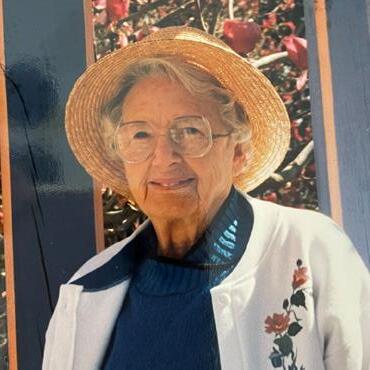
Laure l lB u s Trail Bobbitt Hole Bobbitt Hole Trail SpargerRd Col e MillTrail ColeMillRd NANCY R H O D E S RC E EK Rivermont R d Pump Station Trail Dunnagan Trail Laure Blu s Trail Fish Dam Island SE V MNE LECREEK Gebel Rock Rose ofSharronRd GuessRd BOW LKEERCGNI DRYCREEK Umstead Rd PEACREEK Pea Creek Trail PlesantGreen Rd Col e M i l l Piedmont Trail Knight Trail R i d geTrai l RidgeTrail Shakori Trail BUCKQUAR T ER ERC E K F idle ts o n e Trail Holden MillTrail Cox Mountain Trail Fanny’s Ford Trail Buck quart e r C r e e liarTk Howe St PUMP STATION CABE LANDS COLE MILL FEWS FORD GUESS ROAD
www.ctwilson.com
BIG TOP Festival


BIG
BIG
Food Vendors
Photo Museum
Willow House Coffee
Espresso, cortado, cappuccino, latte, mocha, drip coffee, pourover coffee, chai, loose-leaf teas, cacao, koffee, hot chocolate, steamers, cold-pressed juices, kombucha, baked goods (incl. gluten-free), oatmeal cups, chicken salad, hardboiled eggs, bagel & cream cheese, fruit cup
Meadow Locopops!
Lower Food Court
Sunset Slush
Premium classic Italian ice
Sarah’s Empanadas
Empanadas, arepas, pupusas, rice, beans, yuca fries, green beans



Beau & Kales
Bbq sandwiches and platters
Upper Food Court
Vimala’s Curryblossom Cafe

Chicken tikki masala, chickpea curry, steamed idli with sambar, vegan “meatball” sliders, deep-fried eggplant sticks, mango pudding, house-brewed kombucha, local muscadine juice
Alkaline Bites
All vegan food: oyster mushroom sandwich, black garbanzo bean burger, butternut squash burger, crispy burro banana fries, electric power salad
Jamaica Jamaica Rice, black beans, yellow fried plantains, stir-fried cabbage, jerk chicken, veggie & beef patties, coco bread
Nacho Mama’s Crazy Corn
Roasted corn on the cob, corn off the cob and nachos including these flavors, elotes/esquites (Mexican street corn), Caribbean Jerk, New Orleans Cajun, Buttered American, and our own Jolly Roger Old Bay
Ta Contento Mex Fast Food Burritos, tacos, nachos, and quesadillas

Tooties Mobile Kitchen Burgers, fries, cheese fries, steak and cheese hoagies
Funnel Bakes
Funnel cakes, deep-fried oreos
Party in a Pita
Gyros (beef, lamb, chicken, or shrimp), falafel, schwarma, baba ganouj, hummus, tabouli, stuffed grape leaves
Palace International
Veggie and beef samosas, beans & coconut milk, rice, chicken karanga
Various Fahsyrah’s Lemonade
Fresh squeezed, premium Lemonade
Mill
Smitty’s Homemade Ice Cream Super-premium Homemade Ice Cream and chocolate chip cookie sandwiches
26 June 28, 2023 INDYweek.com T D Bike Parking Eno Drink Booth L Beer Garden Lemonade Info Kiosk Trash Free T T T T D 4 5 6 9 10 7 8 11 12 13 15 #29 Booth Location Toilets 1 The Backroads Studio - photography 2 Flying Goat Studios - beadwork/wood 3 unique batik - clothing 4 Hothouse Posey - jewelry 5 Ask the Trees - wood 6 ZenJumps Chainmaille - jewelry 7 Hmong Needle Work - fiber 8 SeaSaw Crafts - printing 9 DP Fine Art - mixed media 10 Amie Hodges Ceramics 11 Legacy Prints & Paper - photography 12 Andrew Lonon - sculpture 13 Scott Meyer Designs - wood 14 Kathleen Master Designs - mixed media 15 New South Pattern House - printing 16 Pickle Pie Pottery 17 Calico Creates - mixed media 18 Curtis Krueger - photography 19 Kimberley Pierce Cartwright - fiber 20 Anne’s Apothecary LLC - body products 21 Kathy Whitley Pottery 22 Easy Street Leather 23 Krishna’s Henna/Gopi Arts 24 Gray Works - drawing 25 pflora metal arts, LLC - jewelry 26 doora ceramics 27 Andria Linn Fine Art - painting 28 Laura Rogers Ceramics 29 Thistle Ridge Soap LTD 30 Senora Lynch Living Traditions - pottery 31 J.Mark Designs Silverwork - jewelry 32 Nick Dahlstrom - painting 33 Secret Paper Co. 34 Saudamini Madra Designs - drawing 35 Luis Enrique Gutierrez - pottery 36 Brian Merg - metal 37 AdaArt - jewelry 38 woodcrafty - wood 39 Frances and Me - fiber 40 River Swirl Mosaics - glass 41 Talulah Jewelry 42 Little Dog Print Shop 43 Terry Massey - masonry 44 Origami2Go, LLC - paper 45 Fiber Art Demonstrations 46 Hand Tool Woodworking 47 Eno Tee Shirt Outpost 48 Friends of Geer St Cemetery 49 Nnamdi Batik Art - clothing 50 Durham Co. Master Gardeners 51 Garry Childs Pottery 52 High Strung Community Music 53 Finklepotts Fairy Hair 54 Indyweek 55 Carolina Theatre of Durham 56 NC Conservation Network 57 Durham Co. Sheriff’s Office 58 American Red Cross 59 NC Solar Now 60 American Chemical Society 61 Equality NC 62 Live Edge Art By Robert - wood 63 Taylor Kennedy Art - pottery 64 Kahlilascope Stained Glass 65 Mark C Blanchard - paper 66 Speedwell Art and Jewelry 67 Piedmont ClayWorks 68 Gilded Lily Glass - jewelry 70 Creations by Guido - jewelry 71 Milestone Bag Co. - leather 72 IONA Clothing 73 Unpredictable Jewelry 74 Hendrick Subaru 76 Eno Animal Hospital 77 H20 2 Go 78 Southern Energy Management 79 Zarazua Painting 80 Arlyn Solorzano - Movil Realty 81 All American Gutter Protection 82 Durham County Democratic Party\ 83 Endswell Water Cremation & Urn Gallery 84 Blue Stem 86 Delores Pottery 87 Vesal Cuts Paper 88 Lyndsey Quilts 89 Alans Woodcraft 90 fishwarp - fiber 91 Hand Over Heals: Body Art 92 The Urban Chicken 93 Friends of the Mountains-to-Sea Trail 94 Citizens’ Climate Lobby 96 Duke Healthcare Preparedness Coalition 97 B.I.T.S. of Cosmic Proportions - cotton candy 98 All Strings Detached - fiber 99 Elemental Choice - printing 100 Studio Adeline - glass 101 Impulsive Creativity - jewelry 102 Jason DuPertuis Printmaking 103 Sarah’s House of Clay 104 NC Herpetological Society 105 Raleigh Real 106 Caricatures by Charlotte Runde 107 Karen Casey Fused Glass Designs 108 Secret Tweetle - photography 109 Lou Horton Sculpture - jewelry 110 Hanancrafts - wood 111 Molly Chopin - Visionary Artwork - painting 112 KathPippin Art - mixed media 113 Forested Way - wood 114 Durham Parks and Recreation 115 Durham Parks Foundation 116 Durham Co Beekeepers 117 NC State Neuse River Waterdogs 118 Museum of Life and Science 119 Eno River Association 120 Urban Community AgriNomics 121 Farm Church 122 Friends of Plant Conservation BIG TOP Eno Posters BIG TOP Eno Tee shirts
Information
Parks
TOP Friends of State
TOP NC State Parks MAP Lebanon VFD MAP WayCool Spot
to Participant Parking T D Bike Parking Eno Drink Booth L Beer Garden Lemonade Info Kiosk Trash Free + D L T T T T T T T T T T T T T T D D D D D L 3 4 5 6 2 9 10 7 8 11 12 13 15 16 18 17 26 27 25 29 28 30 31 33 40 38 37 50 54 64 65 76 91 88 70 Beer Garden 57 66 69 32 71 72 74 78 79 45 86 87 98 99 97 109 111 112 39 49 #29 Booth Location 19 20 34 42 43 44 52 67 73 96 56 53 89 90 1 21 23 22 24 35 36 41 46 47 51 55 58 61 62 63 81808382 92 94 93 100 101 102 103 105 107 106 104 108 108 115 121 118 114 116 119 84 120 117 110 48 59 60 113 122 Toilets





INDYweek.com June 28, 2023 27 LIMITED TIME OFFER $525 OFF * GET A FREE INSPECTION *Ten percent o any job over $2500 up to a max of $525. Coupon must be presented at time of inspection. O er may not be combined with any other o er. Limit one per customer. Ask inspector for further details. Promo valid through 6/30/2023. HIC#79336 BECAUSE YOUR CRAWL SPACE SMELLS REALLY MUSTY. 877-592-1759 FOUNDATION REPAIR BASEMENT WATERPROOFING CRAWL SPACE REPAIR CONCRETE LIFTING cabbage, nachos street corn), American, and hoagies schwarma, baba rice, chicken chocolate chip Participant
JUNE ALBUM REVIEWS
Phil Venable: Bringing the Light

HHH 1/2
Soul City Sounds | June 16
Wye Oak: Every Day Like the Last
HHHH
Merge Records | June 23
Phil Venable records and releases music under the umbrella of Soul City Sounds, a small imprint that cultivates a unique intersection of jazz, poetry, and the artier side of old-school Chapel Hill indie rock.
The imprint is especially notable for releasing The River Speaks of Thirst, the revelatory first album by North Carolina poet laureate Jaki Shelton Green, in 2020. The album brushed Green’s innately musical verses with jazz so wispy it was basically ambient. The collaboration continued the next year with a more orchestral but nearly as subdued setting of Green’s “I Want to Undie You.” Now she has returned to Soul City Sounds as a guest on Venable’s Bringing the Light, but this time with a band that’s letting it rip.
Bringing the Light is a three-track EP of spiritual free jazz following the star of protean saxophonist Pharoah Sanders, who died last fall. Playing guitar and upright bass himself, Venable assembled a rather inspired quartet. The kit of veteran North Carolina jazz drummer Tommy Jackson blends with the hand percussion of Ken Moshesh, a D-Town Brass member with a storied Bay Area history. In the spotlight is shadowy saxophonist “Crowmeat” Bob Pence, the comparative youngster in this seasoned ensemble, who has still been a crossover fixture in local jazz and experimental music for decades.
Pence opens “The Valley” with an ominous purr, then blows a bluesy geometry over scattering percussion. On “The Climb,” the band shatters a sultry groove and pits it against the powerful undertow of Green’s poem “Love Note to the Ancestors.” To hear her verses in a more aggressive context is very interesting. There’s a moment halfway through when the music and words seem to be on the verge of separating onto different tracks, but it occasions a thrilling moment when Green slams them back together, speeding her cadence on the repeated word “now.”
Likewise, “The View” shows a new side of Chapel Hill–based gospel singer Jennifer Evans, who sings fluid runs and weighty lyrical fragments that connect Black Lives Matter and ’60s civil rights protests over music that sounds like a psych-rock construction site. On Bringing the Light, the sound and language sometimes seem to have a bit more distance between them than they did on prior poetic melds, which takes some getting used to, but it’s just evidence of a collaboration growing bolder, with many haunting and heroic moments to be found. — Brian Howe
Many of us took the pandemic as a chance to reset, and Wye Oak was no exception. Durhamites by way of Baltimore, Jenn Wasner and Andy Stack had made six albums as Wye Oak, a form they were on the point of perfecting with 2018’s The Louder I Call, the Faster It Runs, which completed an evolution from categorical indie rock to something more expansive and superb. It was hard to imagine how they would try to top it, so they didn’t.
Instead, in 2020, the duo pivoted to releasing singles at a fairly steady clip. By 2023, they had accumulated enough of them to fill out this compilation album, which leads off with two new songs.
In this consolidated form, the extent to which Wye Oak has left rock music behind is striking.
The genre drives “Fortune” in a low, powerful gear, with an ingeniously spiraling guitar lead as memorable as any hook. It touches the gnarled hymn of “Evergreen” and the dreamy shuffle of “Fear of Heights.” But what prevails is a kind of stylish art folk, whether it’s drawn taut and crashing or slung low at a countrypolitan canter. Huge, translucent basses lap over protractor-drawn guitar shapes, and electronic fields whir in the gaps, as Wasner unpacks her phrases with a slow, mercurial timbre.
Of the new songs, the title track is warm-breezed and sweetened by Alan Good Parker’s pedal steel, while “I Learned It from You” is one of those peculiarly icy yet molten ballads they’ve come to do so well.
But the question remains (at least for those of us whose 20th-century music brains will never fully heal), is Every Day Like the Last the seventh Wye Oak record or not?

It certainly looks like one, yet the piecemeal presentation does make a difference. Each song had to stand alone, so there are no mere contrasts or ligaments, only all-in attempts to capture the Wye Oak spirit, which resolves between the simplest of musical patterns and the world of smoothly relentless change they inhabit.
— Brian Howe
28 June 28, 2023 INDYweek.com
M U S IC
Django Haskins: Lost World

HHHH
Self-released | July 27
It’s no surprise that an album born from an exercise to help maintain creativity during the pandemic would concern itself with distance. Django Haskins’s Lost World, the first piano-led collection from the Old Ceremony songwriter, draws on the roughly 120 songs (and counting) he has penned since May 2020, spurred by a group of friends who started getting together virtually once a week to share a new song and get feedback.
The eight songs culled for the album constantly assess distances with a yearning to overcome them. Some of these distances are physical, some are formed by the mortality and loss that Haskins notes as persistent themes, and some are even more metaphysical, taking stock of the divide between what you want the world to be and what it is.
The music is a fitting backdrop for such lonely, contemplative ruminations, with the patient piano parts Haskins recorded solo at his Calvander Sound studio in Chapel Hill reveling in the echoing distance between keystrokes. The record, finished in postproduction with help from Chris Stamey of The dB’s, adds subtle, ethereal embellishments from guitar, bass, drums, and saxophone (provided by The Mountain Goats’ Matt Douglas) to juice the feeling that these songs emanate from far away, hoping to find a sympathetic listener. That’s exactly the kind of distance Haskins feels on “Woodpecker,” which finds the narrator sitting alone in an abandoned city, sending out notes in bottles “Like a record of ‘Johnny B. Goode’ sent to echo forever in space / We go searching for an innocent ear in the universe’s empty face.”
Opener “Man in Sea” examines the distance that can form between parents and children. Haskins sings from the perspective of the son of famed aviator Charles Lindbergh, who became a diver to form his own legacy. “My father flew, and so I dove,” he intones, “Where his shadow cannot go.”
“From an Airplane” looks out at a world filled with chaos and finds comfort in the false notion of control conjured by watching from above: “From an airplane, I control the seas / From a window in economy.” Album closer “Will There Be Time” dreads life’s inevitable separation between loved ones, wondering if there will be enough time to do everything he wants to do with his family: “It’s not like we’re sitting around doing nothing / We’re building a beautiful life / And I almost cry when I look at our children / They never understand why.”
Carried forth by Haskins’s expressive singing—actorly, but never overdramatic—each of these earnest exercises tugs at thoughts that haunt life’s quiet moments. As such, it’s a product of the pandemic that should have a long shelf life. — Jordan
 Lawrence W
Lawrence W
INDYweek.com June 28, 2023 29
M U S IC
Through Sunday, Aug. 27 | The Nasher Museum of Art, Durham | nasher.duke.edu
Multiple Exposures
BY HARRIS WHELESS arts@indyweek.com
My recent visit to the Nasher Museum of Art, for a walk-through of the museum’s exhibition on the photography of Andy Warhol, happened to coincide with a rehearsal for the American Dance Festival.
“It’s lively,” said Wendy Hower, the Nasher’s director of engagement and marketing, as she let me in at the loading dock entrance and we boarded the service elevator. “There’s nudity,” she warned.
But we must have arrived too early or too late in the rehearsal, for when we reached the main floor, music was blaring but all the dancers were fully clothed, stepping back and forth in unison in front of a background set.
The Nasher’s chief curator, Marshall Price, then led me into the nearby exhibition room, where the sound was slightly dampened. All this was happening because it was Monday, the one day the museum is closed to the public. Such a multimedia whirlwind seemed fitting for an exploration of Warhol’s photography.
As we stood chatting, Price broke off: “Oh, this isn’t even on,” and disappeared for a moment to reboot the room’s large television, which screens Warhol’s silent film Henry Geldzahler. The film, like one of Warhol’s famous screen tests, features the titular Geldzahler sitting idly in a chair, smoking a stogie and staring out from behind a pair of dark glasses for 99 minutes.
“I knew I wanted to build the show around [Warhol’s] use of the camera lens,” Price says, “because it was so important to his process. So that’s why, for example, you can mix the screen prints with the blackand-white photographs with the Polaroids and even with the one film we have in the collection. They all relate to his reliance on the lens in the creation of a work of art.”
Andy Warhol: You Look Good in Pictures opened in early April and runs through the end of August, in a room adjacent to the sprawling Spirit in the Land , which runs through July 9, and Love & Anarchy, which opened last week and runs through next February.
The Warhol exhibition showcases his polaroids and black-and-white photography alongside the fidgety film of Geldzahler, a photo of Warhol at one of his Brillo Box installations, and the screen prints and large screen-printed paintings he made from found photos as well as his own.
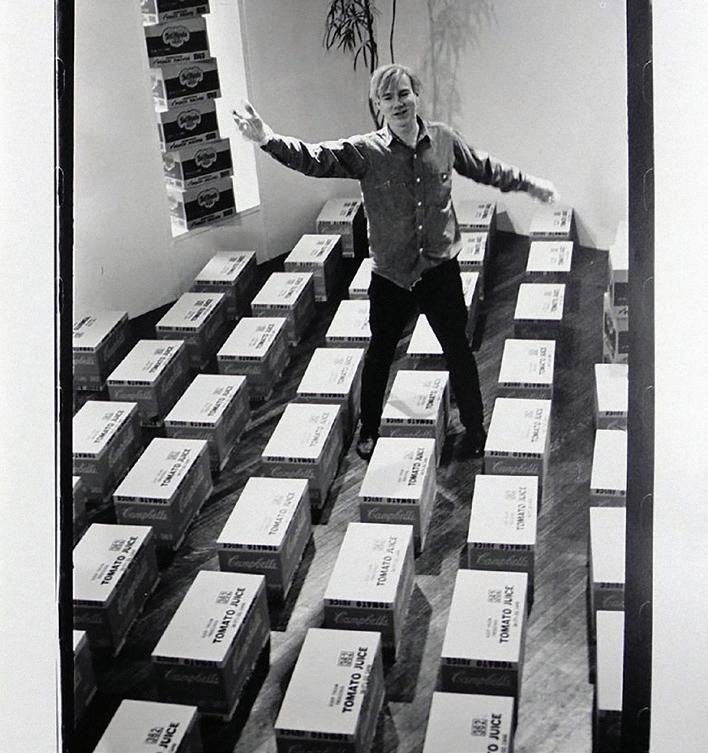
This part of Warhol’s practice—making screen prints from photographs he took himself—is often misunderstood.
“This piece here, the Joseph Beuys screen print, was taken from a Polaroid of Beuys that Warhol took,” Price says, pointing to a yellowish snapshot reproduced on the wall label. “Looking at this, you might not know it came from an actual photograph Warhol himself took. It’s different, in many ways, from the screen prints of found photographs, like the Jackie Kennedy and the Marilyn piece. But this process of taking the Polaroid and then using it as the basis for a screen print was really important for him.”
The perimeter of the exhibition room is covered in black-and-white photos, punctuated by screen prints—the four-panel Beuys, a gray-and-white Jackie, a glowing Marilyn, a tri-tone Muhammad Ali, and a collage-like portrait of Wilhelmina Ross— with a long glass case of Polaroids in the center of the floor.
Warhol had been experimenting with photography since the late 1940s. In the ’60s he began practicing in earnest.
“He would not go out without a camera in hand for almost his whole life,” Price says.
“He either had a camera or a camera and a tape recorder with him, documenting his life and other people’s in a kind of stream of consciousness.”
Many of the photos’ sitters are marked “unidentified,” and aside from a few with matte white backgrounds, likely taken at Warhol’s studio the Factory, many of the locations are unknown.
“Maybe that was Studio 54,” Price speculates about one. “He loved the glamour and the glamorous life and people who were glamorous, or thought they were glamorous.”
Most of the photographs were produced between 1977 and 1985, a period that was a culmination of Warhol’s obsessive, yearslong documentation of his social circle— the New York arty and fashionable set, street figures, and Factory entourage—and society’s broader saturation of images and fleeting cultural memory.
The Nasher itself encourages visitor photos: “We love selfies best!” a sign in the lobby reads. It echoes Warhol’s credo
that every face is capable of iconicity—if you shoot it right. But the exhibition also rewards close engagement with the works, their manner of production, and what Warhol’s world might have been like behind the scenes, between captured moments. The intimacy, the joyful wit of many of the photos, how Warhol took many of them in rapid-fire fashion, without looking into the viewfinder. How, for better or worse, he helped pioneer a visual culture of proliferation, of status achieved by widespread media presence.
“He was a harbinger of social media in so many ways,” Price says, from the photos that cry out “‘Oh, I’m here; look who I’m with,’ to the disposable nature of the images, because he took so many. He wasn’t after a ‘good picture’ in which you would stage somebody and there’d be lighting and you’d capture that”—Price snaps his fingers—“decisive moment. But [he was interested in] capturing those fleeting moments in passing, those ephemeral moments, which is what social media is capturing today. So he probably would have loved it.” W
30 June 28, 2023 INDYweek.com A RT
A new exhibition at the Nasher Museum of Art explores Andy Warhol’s relationship with photography—and the culture of visual proliferation he helped pioneer.
ANDY WARHOL: YOU LOOK GOOD IN PICTURES
“Andy Warhol with Tomato Juice boxes,” 1964. COLLECTION OF THE NASHER MUSEUM OF ART AT DUKE UNIVERSITY. GIFT OF FRED W. MCDARRAH, 2001.35.1. © FRED W. MCDARRAH.
Through Sunday, July 1 | popboxgallery.com | Jim Lee | bambooturtle.com
Off the Wall
Durham artist Jim Lee’s intricate new project has layers: It’s a gallery inside a gallery.
BY HANNAH KAUFMAN arts@indyweek.com
First, Jim Lee bought the materials. He stripped back the sheetrock wall. He pulled out the insulation batts to find brick underneath. He tore up the disposable floor, sanded, and stained planks of wood to perfection. He put in flooring, then a skylight, then track lighting, then arranged 27 art pieces around the space.
And he did all of it in a gallery 1/12 of a normal size.
Lee’s exhibition, named upstART Gallery, is currently being hosted by Durham’s Pop Box Gallery through Saturday, July 1, at 304 South Driver Street.
Originally founded in 2022 by Mavis Gragg and Laura Ritchie (founder of the Carrack gallery, which closed in 2019), Pop Box hosts exhibitions in various pop-up spaces around Durham.

“In being mobile and being able to pop up in multiple locations, we are engaging different communities,” Ritchie says. “We’re hoping that we are highlighting the artistic talent and creative communities that already exist in the communities in which we locate, and helping to nurture and grow that artistic community in each location.”
As the namesake suggests, the project got its start in a box: Last year, Boxyard RTP offered a grant for new businesses to lease their storage containers, and Gragg and Ritchie jumped on the opportunity, hosting over 40 exhibits from local artists like William Paul Thomas, Saba Taj, Derrick Beasley, Zaire McPhearson, and Catherine Edgerton. Local curator Gail Belvett gave slow art tours of these exhibits, offering viewers the chance to connect with the art without feeling rushed.
After that three-month residency, Ritchie and Gragg, alongside Belvett,
began looking for their next temporary home. They found it in Old East Durham, where they’ve hosted three exhibits over the 10-week lease: a community art show focused on the relationships between the BIPOC community and nature; Kennedi Carter’s one-week photography exhibit portraying vintage pinup photos of Black women; and Lee’s upstART Gallery
UpstART Gallery is a project two and a half years in the making. The carefully constructed wooden box—a 48x24 floor plan, with 14-inch walls and a 6-inch roof structure—holds miniature art from 27 local artists. The art pieces inside the gallery, ranging from a tapestry the size of a fingernail to mosaics made from bits of eggshell, are all for sale, as is the gallery itself.
“I’d like someone to walk out of here with the gallery,” Lee says. “Give it a home.”
The art inside the minigallery ranges across styles and mediums, but the narrative that inspired upstART—which is displayed across the left wall of Pop Box— has remained constant in Lee’s mind even before he began construction.
As the narrative details, Lee grew up in Durham exploring construction sites with his best friend, Gene Turner. The two boys loved adventure; Lee was always finding creative ways to put scavenged materials together. When he began construction on upstART, the story of Ahmaud Arbery—a young Black man who was killed for poking around a construction site, just as he used to—was woven throughout.
“That could have been me,” Lee says. “I still like construction sites, but I don’t go in them anymore, for safety reasons.”
Over the last two and a half years, his Durham home became his own construction site. At 83, Lee has a litany of careers
behind him: linguist, journalist, farmer, professor, and throughout it all, self-taught artist. He’s done exhibitions of photography, 3-D objects made of found material, and audio art. Lee likes to put artistic constraints on himself. In past projects, those constraints have been around content or subject matter, but upstART was the first time he’s limited himself by scale. It was also a first for many of the 27 artists who responded to Jim’s community call for 1:12-sized art.
To create the miniature gallery, Jim bought tools and materials with a $1,000 grant from the Awesome Foundation of Raleigh alongside contributions he’d received from friends along the way. The construction progress photos accompanying Lee’s narrative, which are displayed at the gallery and on his social media, are so convincing that some of his close friends who have glimpsed the photos don’t even know that the gallery isn’t life-sized. Those who are aware of the gallery’s miniature nature have kept quiet, reveling in the illu-
sion’s power to dumbfound and delight.
Pop Box, meanwhile, is going on hiatus as its founders pursue other opportunities this year: Gragg has a fellowship in Cambridge; Ritchie is working on opening a new creative space in Durham, alongside her wife, Shirlette Ammons; and Belvett is working at the Nasher and carrying Pop Box’s collaborations on until it’s time for the project to pop up again.
Lee and the contributing upstART artists will be popping back up in the Durham arts scene too, though perhaps without the size constraints of this project.
“I hope people will understand how deeply personal and political the work is but also appreciate what it took for the contributing artists to really shift gears,” Lee says. “Most of these people do much larger work—they took this on as a challenge, had fun, shifted gears, and just showed up.”
He hopes visitors will do the same. Have fun, shift gears, show up—and maybe even buy the next tiny “Mona Lisa” along the way. W
INDYweek.com June 28, 2023 31 A RT
Jim Lee’s “upstART Gallery”.
PHOTO BY HANNAH KAUFMAN
UPSTART GALLERY | Pop Box Gallery at 304 South Drive Street
Indiana Jones Says Goodbye
Harrison Ford retires his iconic archaeologist in a movie designed for the big screen.
 BY GLENN MCDONALD arts@indyweek.com
BY GLENN MCDONALD arts@indyweek.com




It’s no secret that we’re experiencing a tidal shift in how people watch movies. Streaming and on-demand services have made it much easier to get films, even brand-new ones, delivered straight to your living room or laptop screen or even [sigh] the 5.8 diagonal inches of your smartphone. There are some movies, however, that pretty much demand to be experienced in their natural habitat: on the big screen, with other people. Indiana Jones and the Dial of Destiny is that kind of movie.
The fifth and reportedly final installment of the beloved series brings back alpha movie star Harrison Ford for one last adventure. I’m happy to report that it’s a good one. Director James Mangold (Logan) uses all the tools of 21st-century filmmaking to revive the generous spirit of the franchise. Destiny opens with an extended flashback scene in which a young Dr. Jones squares off against his traditional nem-
eses—Nazis—aboard a speeding train filled with war plunder. Set in the final days of World War II, the sequence features digital de-aging techniques to give us a long last look at Ford as Indy in his prime.
The de-aging works as well as I’ve seen this stuff work, largely because it’s actually deployed in service of the story. The following scene flashes forward to show Indy circa 1969, shuffling about in his small bachelor apartment looking old and vulnerable. Word is that Ford insisted on filming this scene shirtless, to show the ravages of time on our intrepid archeologist. That’s a deliberate bit of sequencing because Dial of Destiny is all about time and its tyrannical march forward. By framing Indy’s last story this way, the film provides an emotional charge to the adventure that follows.
And what an adventure it is! Dial of Destiny has a half dozen brilliantly executed set pieces in classic series style. An extend-

ed fight through a protest march takes Indy from the rooftops to the subways of Manhattan. A fantastic chase scene in Morocco features rickety three-wheeled taxis careening through the crowded streets of Tangier. We also get the mandatory dusty tomb filled with creepy-crawlies and a tricky underwater sequence in a Mediterranean shipwreck.
The showcase action scenes are stitched together with a tight script featuring an ancient artifact, a twisty time-travel mystery, a nefarious villain (Mads Mikkelsen as an unreformed Nazi scientist), and some of the series’ best henchman/goon characters. But the film’s most crucial casting decision is Phoebe Waller-Bridge as Helena Shaw, a fellow adventurer with a connection to Indy’s past. Cool and competent, WallerBridge somehow manages the impossible task of matching Harrison Ford in pure movie-star charisma.


Director Mangold and his team handle all the tomb raiding and globe-trotting with skill and style. Indiana Jones is a hallof-fame movie hero, one of the best Hollywood has ever created. Thanks to Ford’s characterization, he’s always been a relatable character, vulnerable to mistakes and harm and the passing of time.
Mangold realizes that, after all these years, we have an emotional investment in this guy. We need a proper ending.
The script provides one by bringing back some favorite characters—including John Rhys-Davies as Indy’s stalwart ally Sallah—and executing a triple-twist climax that works just fine, so long as you don’t think it through too much.
Everything in Dial of Destiny is designed to play in the big-screen environment, and the theater is really the proper venue to say goodbye to Indiana Jones. If you want to see Indy one last time, I recommend you do so the old-fashioned way: in a cool dark room with a big, rowdy crowd. W
32 June 28, 2023 INDYweek.com Raleigh's Community Bookstore Register for Quail Ridge Books Events Series at www.quailridgebooks.com EVENTS www.quailridgebooks.com 919.828.1588 • North Hills 4209-100 Lassiter Mill Road, Raleigh, NC 27609 FREE Media Mail shipping on U.S. orders over $50 WED 6.28 7:00 PM THU 7.6 7:00 PM SAT 7.1 10:30 AM Beatriz Williams, The Beach at Summerly IN-STORE Alexandra Penfold All Are Neighbors IN-STORE /STORYTIME Julia Franks The Say So IN-STORE S C R E E N
Harrison Ford and Phoebe Waller-Bridge PHOTO COURTESY OF LUCASFILM LTD.
INDIANA JONES AND THE DIAL OF DESTINY | HHHH Now in theaters
Please check with local venues for their health and safety protocols.
MUSIC
Lybica $12. 7 p.m. Local 506, Chapel Hill
Music in the Gardens: Melissa Carper 7 p.m. Sarah P. Duke Gardens, Durham.
STAGE
SIX $35+. Jun. 20–Jul. 2, various times. DPAC, Durham.

PAGE
Julia Franks: The Say So 7 p.m. Quail Ridge Books, Raleigh.
COMMUNITY
Producers Only Farmers Market Wednesdays at 3 p.m. Durham Central Park, Durham.
ART
Voices of Oberlin Exhibition Reception 5:30 p.m. Block Gallery, Raleigh.
MUSIC
Below Decks: Wifibutterfly, Debt Stalker, Brydecisive, and Sypha $10. 9 p.m. The Fruit, Durham.
EELS $37. 8 p.m. Cat’s Cradle, Carrboro.
Larry June: Larry’s Market Run Tour $20+. 7 p.m. The Ritz, Raleigh.
Live Jazz with Marc Puricelli and Friends Thursdays at 7 p.m. Imbibe, Chapel Hill.
Miss B Haven Presents: BEATZPERMINUTE $5. 10 p.m. Rubies on Five Points, Durham.
Spare $10. 8 p.m. Local 506, Chapel Hill.
Underground Collective Beat Battle $10. 8 p.m. The Pinhook, Durham.
STAGE
ADF—Bill T. Jones/Arnie Zane Company $48. June 29-30, 7:30 p.m. Reynolds Industries Theater, Durham.
PAGE
Guinevere Turner: When the World Didn’t End 5:30 p.m. Flyleaf Books, Chapel Hill.
COMMUNITY
The Magick Makers Summer Solstice Market 4 p.m. Durham Central Park, Durham.
MUSIC
An Evening with Omari
Dillard: Soul Violinist $35+. 7:30 p.m. Martin Marietta Center for the Performing Arts, Raleigh.
Gable Price and Friends $20. 8 p.m. Motorco Music Hall, Durham.
KIDZ BOP Live $32+. 7 p.m. Coastal Credit Union Music Park, Raleigh.
Kinetic Audio Presents: Solaris Open Air $15. 8:30 p.m. Weldon Mills Distillery, Durham.
The Kneads $8. 9 p.m. Local 506, Chapel Hill.
¡Tumbao! $12. 9 p.m. Cat’s Cradle Back Room, Carrboro.
Zachary Gossett Sextet: Music of Andrew Hill and Geri Allen $25. 8 p.m. Sharp Nine Gallery, Durham.
STAGE
Hush Hush: Comedy Based on Secrets $8. Fridays at 9 p.m. Mettlesome Theater, Durham.
COMMUNITY
Hillsborough’s Last Fridays & The Art Walk 5:30 p.m. Old Orange County Courthouse, Hillsborough. Solidarity for El Salvador $15. 6 p.m. The Pinhook, Durham.
INDYweek.com June 28, 2023 33 WED 6/28 THURS 6/29 FRI 6/30
C U LT U R E CA L E N DA R
North Carolina Symphony and Troupe Vertigo perform Cirque Cinema at Koka Booth Amphitheatre on Saturday, July 1.
PHOTO COURTESY OF KOKA BOOTH AMPHITHEATRE
C U LT U R E CA L E N DA R
Please check with local venues for their health and safety protocols.
ART
Pop-Up Art Show: Beyond the Surface Jul. 1-2, 11 a.m. The Eno House, Hillsborough.
MUSIC
Adam Knight’s Buried Alive (Tribute to Phish) $15. 8:30 p.m. Lincoln Theatre, Raleigh.
CJ Monet: Classic & Contemporary R&B 7 p.m. Succotash, Durham.
Gabe Dansereau and Ariel
Pocock Duo $25. 8 p.m. Sharp Nine Gallery, Durham.
Kiltro $15. 8 p.m. Cat’s Cradle Back Room, Carrboro.
One 4 the Road Tour: KevO, Justen Best, and Cam in Action $15. 8 p.m. Local 506, Chapel Hill.
Rent Due Dance Party!!
$5+. 10 p.m. The Pinhook, Durham.
Sacred: Let Go and Let Goth $5. 9 p.m. Rubies on Five Points, Durham.
STAGE
ADF—staibdance $27. Jul. 1-2, various times. Rubenstein Arts Center, Durham.
The ComedyWorx Show
Matinee $9. Saturdays at 4 p.m. ComedyWorx, Raleigh.
House Party Improv Show $8. 9 p.m. Mettlesome Theater, Durham.
North Carolina Symphony Summerfest: Cirque
Cinema $42. 8 p.m. Koka Booth Amphitheatre, Cary.
COMMUNITY
43rd Annual Festival for the Eno $25+. July 1 and 4, 10 a.m. West Point on the Eno Park, Durham.
Good Folk Fest $25. 7 p.m. Haw River Ballroom, Saxapahaw.
MUSIC
Don Toliver: Love Sick Tour $64+. 7:30 p.m. Red Hat Amphitheater, Raleigh.

STAGE
CIPHER, a Percussive Arts Conference $20. 9 a.m. The Ballet School of Chapel Hill, Chapel Hill.
COMMUNITY
The Fruit Flea 11 a.m. The Fruit, Durham.
Summertime Cookout on the Veranda 4 p.m. Motorco Music Hall, Durham.
ART
Fine Arts League of Cary: Annual Juried Exhibition
10 a.m. Page-Walker Arts & History Center, Cary.
COMMUNITY
Full Moon Fire Ceremony
7 p.m. Unity Center of Peace, Chapel Hill.
MUSIC
Barenaked Ladies with Five for Fighting and Del Amitri: Last Summer on Earth Tour $19+. 6:30 p.m. Red Hat Amphitheater, Raleigh.
COMMUNITY
July Fourth on the Roof 3 p.m. The Durham Hotel, Durham.
34 June 28, 2023 INDYweek.com SAT 7/1 SUN 7/2 MON 7/3 TUES 7/4
Pi’erre Bourne performs with Don Toliver at Red Hat Amphitheater on Sunday, July 2.
PHOTO COURTESY OF RED HAT AMPHITHEATER
Please check with local venues for their health and safety protocols.
WED 7/5
THUR 7/6
MUSIC
1-Hit Wonders Drag Show $15. 12 a.m. The Pinhook, Durham.
Music in the Gardens: Christian Lopez 7 p.m. Sarah P. Duke Gardens, Durham.
Jinkx Monsoon: Everything at Stake $214. 8 p.m. The Carolina Theatre, Durham.
PAGE
Zelda Lockhart: Trinity 5:30 p.m. Flyleaf Books, Chapel Hill.
COMMUNITY
Producers Only Farmers Market Wednesdays at 3 p.m. Durham Central Park, Durham.
MUSIC
Live Jazz with Marc Puricelli and Friends Thursdays at 7 p.m. Imbibe, Chapel Hill.
The Revivalists / The Head and the Heart $43+. 6:30 p.m. Red Hat Amphitheater, Raleigh.
STAGE
ADF—Kyle Marshall Choreography $27. July 6-7, 7:30 p.m. Rubenstein Arts Center, Durham.

FRI 7/7
SCREEN
The Adventures of Prince Achmed 6 p.m. Gregg Museum of Art & Design, Raleigh.
PAGE
Beatriz Williams: The Beach at Summerly 7 p.m. Quail Ridge Books, Raleigh.
MUSIC
SNIDE $10. 8:30 p.m. Local 506, Chapel Hill. waveform* / They Are Gutting a Body of Water / Teethe $18. 7:30 p.m. Cat’s Cradle Back Room, Carrboro.
STAGE
Hush Hush: Comedy Based on Secrets $8. Fridays at 9 p.m. Mettlesome Theater, Durham.
Mamis & the Papis and Party Illegal Present: MOODBOARD $5. 10 p.m. Rubies on Five Points, Durham.
Old Gods of Appalachia: The Price of Progress $20+. 8 p.m. The Carolina Theatre, Durham.
Rachel Bay Jones $35. 8 p.m. Theatre Raleigh, Raleigh.
COMMUNITY
First Friday Market, Food Trucks, and Outdoor Movie Night 5 p.m. Moore Square, Raleigh.
INDYweek.com June 28, 2023 35
C U LT U R E CA L E N DA R
Kyle Marshall Choreography performs at Rubenstein Arts Center on July 6 and 7.
PHOTO COURTESY OF AMERICAN DANCE FESTIVAL
C U LT U R E CA L E N DA R
Please check with local venues for their health and safety protocols.
MUSIC
LL Cool J, The Roots, and Juvenile: The F.O.R.C.E. Live Tour $27+. 8 p.m. PNC Arena, Raleigh.
Matt Watson $20. 8 p.m. Motorco Music Hall, Durham.
Shallow Cuts: Parental Advisory $5. 9 p.m. Rubies on Five Points, Durham.
Tears for Fears and Cold War Kids: The Tipping Point World Tour $43+. 7:30 p.m. Coastal Credit Union Music Park, Raleigh.
STAGE
ADF—Footprints $27+. July 8-9, various times. Reynolds Industries Theater, Durham.
The ComedyWorx Show
Matinee $9. Saturdays at 4 p.m. ComedyWorx, Raleigh.
Golden Age: Comedy Based on Special Guests 9 p.m. Mettlesome Theater, Durham.
John Oliver $70+. July 8-9, 8 p.m. DPAC, Durham.
North Carolina Symphony Summerfest: Tango Caliente $35+. 8 p.m. Koka Booth Amphitheatre, Cary.
SCREEN
Sensory-Friendly Film Series: Inside Out 11:30 a.m. The Carolina Theatre, Durham.
COMMUNITY
Durham Refugee Day 3 p.m. Durham Central Park, Durham.
Second Annual Red Hot Summer Cookout $20. 6 p.m. PS37, Durham.
MUSIC
Hot Mulligan SOLD OUT. 7:30 p.m. Cat’s Cradle, Carrboro.
PAGE
Poetry Reading and Open Mic 2:30 p.m. Flyleaf Books, Chapel Hill.
MUSIC
binki $16. 8 p.m. Cat’s Cradle Back Room, Carrboro.
HALLOWEEN / FIB / Sweet Home / Saturnalias $10. 8 p.m. Rubies on Five Points, Durham.
MUSIC
Jeremy “Bean” Clemons Jazz Trio $8. Tuesdays at 9 p.m. Kingfisher, Durham.
Joseph Foglia Quintet $10. 7 p.m. Sharp Nine Gallery, Durham.
Louise Post (of Veruca Salt) $20. 8 p.m. The Pinhook, Durham.
Skating Polly $13. 8 p.m. Cat’s Cradle Back Room, Carrboro.
5:30

36 June 28, 2023 INDYweek.com SAT 7/8 SUN 7/9 MON 7/10 TUES 6/11
PAGE
Frank Hyman: How to Forage for Mushrooms
p.m. Flyleaf Books, Chapel Hill.
Matt Watson performs at Motorco Music Hall on Saturday, July 8. PHOTO COURTESY OF MOTORCO
U Z Z L E S
If you just can’t wait, check out the current week’s answer key at www.indyweek.com, and click “puzzle pages” at the bottom of our webpage.

su | do | ku
© Puzzles by Pappocom
There is really only one rule to Sudoku: Fill in the game board so that the numbers 1 through 9 occur exactly once in each row, column, and 3x3 box. The numbers can appear in any order and diagonals are not considered. Your initial game board will consist of several numbers that are already placed. Those numbers cannot be changed. Your goal is to fill in the empty squares following the simple rule above.


If you just can’t wait, check out the current week’s answer key and previous puzzles at indyweek.com/puzzles-page

Best of luck, and have fun!
this week’s puzzle level: 06.28.23

INDYweek.com June 28, 2023 37 INDY CLASSIFIEDS classy@indyweek.com
Best Triangle 2023 of the Orange & Chatham Counties
C L A S S I F I E D S
HEALTH & WELL BEING

EMPLOYMENT
Sr Project Manager
Sr Project Manager. Altera Digital Health Inc. fka Allscripts Managed Services LLC. May teleco in US & rpt to Raleigh, NC HQ. Define prjct scope to assist clients EMR SW upgrade/implmnt. Reqs at least Bach in Busi Admin/Health IT/rel/ equiv & 5 yrs exp leading hlthcare SW implmnt team/hlthcare SW direct implmnt incl 5 yrs: prjct mgmt incl sched, cost, change & risk mgmt. Reqs 5-10% US trvl. M-F, 8 a-5 p, 40 hrs/wk; evenings/wkends may be req’d. Apply: resume to resumes@alterahealth.com & ref #107215.
Software Engineering Managers
Software Engineering Managers (Raleigh, NC)
Responsible for solution dsgn for d/bases using but not limited to AWS data services (S3, RDS, Glue, Lambda, EC2). Virtual / work from home benefit available. Reqs a Bach’s deg in Comp Sci, Electronics Engg, or related field, + 5 yrs of IT exp (or a Master’s deg & 3 yrs of such exp). Resumes to Cigna-Evernorth Services, Inc. at Sarah.Williams@evernorth.com
Senior Data Analyst
Senior Data Analyst, Bell and Howell, LLC, Durham, NC. (No Telecomm). Dvlp data model bsd on avlbl data sources & pipeline. Reqs at least Bach in Comp Sci, IT, Bus, Mngmnt / rel/ equiv. Reqs coursework, research / 6 mnths exp: Stat Anlytcs incl time-series sample, probablty, regrssion, linear prgrm & forecast; visualztion tools like Tableau / R; data sci tools like Tensor Flow, R / Python; wrking w/ disparate data sources; JSON; XML; HTML; PIPE Delimited Files; Data Model. M - F, 8a - 5p. Mst submt to drug scrn & bg chck. Apply: resume to: erica.giffen@bhemail.com & ref job #111091.
Sr Project Manager
Nominate your favorite Orange or Chatham county bar, veterinarian, bookshop, museum— whatever it may be, there are over 100 categories in which you can profess your favorite Orange/ Chatham Counties treasures.
Orange & Chatham Counties
NOMINATIONS BEGIN
WEDNESDAY, JULY 19 TH
The most recognized award throughout the Triangle is back for 2023— NEXT UP ORANGE AND CHATHAM COUNTIES! VOTE.INDYWEEK.COM
RECYCLE THIS PAPER
RECYCLE THIS PAPER
RECYCLE THIS PAPER
RECYCLE THIS PAPER
RECYCLE THIS PAPER
RECYCLE THIS PAPER
RECYCLE THIS PAPER
RECYCLE THIS PAPER
RECYCLE THIS PAPER
RECYCLE THIS PAPER
RECYCLE THIS PAPER
RECYCLE THIS PAPER
RECYCLE THIS PAPER
RECYCLE THIS PAPER
RECYCLE THIS PAPER
RECYCLE THIS PAPER
RECYCLE THIS PAPER
RECYCLE THIS PAPER
RECYCLE THIS PAPER
Sr Project Manager, Veradigm LLC fka Allscripts Healthcare, LLC. Must teleco in US & rept to Raleigh NC site. Mng SW dev projcts specf to apps that supprt O/P Registries, EHR & Clinical Trial wkflows. Reqs at least Bach in Info Mgmt/Sys/Sci, Bus. Admin or rel/ equiv & 5 yrs proj mgmt exp incl org, leadrshp & prob solv skills; 2 yrs: O/P Regis Data & wkflow + apps to mng; vendor mgmt; comm w/ stakeholdrs & Agile; MS tech stack & Azure Cloud. 8a - 5p EST, 40 hrs/wk. Add’l hrs may be req’d. Reqs 10% US trvl. Apply: resume to applicants@veradigm.com & ref #109868
Software Engineer - HIS Software Engineer - HIS, Veradigm LLC fka Allscripts Healthcare, LLC. Must telecommute in US & rept to Raleigh NC loc. Multi openings. Dsgn, dvlp, implmnt & supprt co. prods to various hlthcare cstmrs. Reqs Bach/ Mast in Comp Sci/ Comp Engg / rel/equiv. Reqs (if Bach 2 yrs / if Mast 1 yr): hlthcre S/W engg exp; Angular.js; Javascript; .NET Frmwrk; C#.NET; SQL Svr; Websvcs & API. Reqs 6 mos: HL7; CCDA & Mirth Engine. 8a - 5p, 40 hrs/wk. Reqs 15% US trvl. Apply: resume to: applicants@veradigm.com & ref #110036.
Structural Engineer III
Structural Engineer III, Engineered Tower Solutions, PLLC. Raleigh, NC. May telecom in US. Anlyze structre & modfy desgn for telecomm structres & equip. Reqs @ least Bach in Civil Engg/ rel/ equiv. Req 4 yrs exp anlyz & modify telecomm towers & antenna mnts w/ SW incl TNX Tower, RISA 3D, LPILE, AutoCAD & MS Excel, incl 2 yrs: reviewng egnrs compl wrk for telecomm towers & antenna mounts analysis & modify to ensure accurcy & adhernce to ind & client spec stndrds & interact w/ clients re proj timelines, questions & final rprts deliv. Wrk M-F 8a-5p. Hires must sbmt to drg scrn & b/g chck. Apply: resume to: Lori.Howard@ets-pllc.com & ref job # 111163.

38 June 28, 2023 INDYweek.com
INDY CLASSIFIEDS classy@indyweek.com
www.harmonygate.com
919-416-0675
RECYCLE THIS PAPER
EMPLOYMENT EMPLOYMENT
Senior Data Engineer
Senior Data Engineer, Brightly Software, Inc., Cary, NC. May telecom in US & rprt to Cary, NC site & if telecom, may req trvl to Cary, NC for mtgs. Build new data ingestion pipeline into data cloud & guide future data infrastructure decisions. Reqs Master / Bach in CS, IT Mgmnt, Engg, Data Sci/Anlytcs / rel / equiv. Reqs, if Master 5 yrs / if Bach 7 yrs, exp in: SW / data engg; data integrate (ETL / ELT) devel w/ multi langs incl Java, Scala, Python, PySpark / SparkSQL; build & maintain data pipelines supp variety of integrate patterns; build & maintain data lake / w/h in prod environ wrkng w/ data formats like Parquet, CSV, JSON, YAML / XML; wrkng w/ rel DBs usng SQL & develpng complx SQL queries, stored procedures & UDFs, troubleshoot & perf tuning; usng agile best practices like Jenkins, Git / JIRA; build & rationalize data environs w/ complex variety of data pipelines; 3 yrs: utilizng AWS-based data srvce techs like Glue srvcs fam, RDS, Athena / Snowflake & cloud store & compute incl S3, EC2, Lambda, & Step Functions. M-F 8 a.-5 p. Occasionl outside hrs & wkend spprt req’d. All hires sbmt to BG chck. Apply: resume to: heather.copeland@brightlysoftware.com ref job #111495

Software Engineering Senior Quality Analyst
Software Engineering Senior Quality Analyst, F/T at Truist Bank (Raleigh, NC) Lead the creation & execution of test scenarios & cases in support of system testing. Manage the analysis & reporting of test results, incl defect & test summary reports. Support a large portfolio of applications that will support a specific line of business, channel or other business functions. Serve as SME for application s/ware quality. Must have Bach’s deg in Comp Sci, Comp Engg, or related tech’l field. Must have 7 yrs of progressive exp in s/ware engg or IT consulting positions performing/utilizing the following: automation engg, incl dsgn & dvlpmt of test automation solutions & test automation frameworks, solutions & capabilities; automation tooling w/ Selenium, BDD; applying waterfall, agile, & scrum methodologies; automated pipeline delivery methods, incl building & integrating w/ various pipeline processes & platforms, incl Jenkins, GitLab, & Azure DevOps Server/TFS; distributed prgmg & scripting languages: Java, C#, C/C++, SQL, JavaScript, Powershell, & Windows Batch Scripting; & applying knowl of various environmental elements as they relate to testing & test data mgmt (distributed, mainframe, middleware, n/work, compute, storage, & cloud.) Position may be eligible to work remotely but is based out of & reports to Truist offices in Raleigh, NC. Must be available to travel to Raleigh, NC regularly for meetings & reviews w/ manager & project teams w/in 24-hours’ notice. Apply online (https://careers.truist.com/) or email resume w/ cvr letr to: paige.whitesell@truist.com (Ref. Job No. R0077106)
Business Intelligence Data Engineer
Intuitive Surgical Operations, Inc. seeks a Business Intelligence Data Engineer in Raleigh, NC: Design data pipelines & data models. Build Data Integrations for many data sources, including SAP, Agile, Salesforce, QMS/Trackiwise etc. Telecommuting permitted. BS+5 yrs prog rltd exp req’d or MS+3. $138,486 - $176,100/ year. Email resumes to Hien.Nguyen@intusurg.com. Must ref job title & code BIDE-MSN in subject line.
Network Test Engineer
Intuitive Surgical Operations, Inc. seeks a Network Test Engineer (NTE-SCP) in Raleigh, NC. Design, develop & implement automated tests for functional SW & User Interface verification for intricate robotic surgical sys. Reqs BS+5 yrs prog rltd exp or MS+2 yrs exp. $109,275 - $125,400 /yr. Email resumes to Hien.Nguyen@intusurg.com. Must ref job title & code in sub line.
Controls Technician Controls Technician (CT-LDMH). Provide field svc repairs, trainig & installs as sched by Field Service dept. Travel up to 80% domestically & internationally which reqs nearby proximity (w/in 50 mi) to a major metropolitan airport & may req residence in a specific geographic area to better serve a specific customer base. Telecommuting permitted. Reqs BS+1 yr rltd exp. Mail resume to Syntegon Technology Services: HR Manager, 2440 Sumner Blvd, Raleigh, NC 27616. Must ref job title & code.
Editorial and Research Assistant
Editorial and Research Assistant for book concerning Grand Teton National Park, Wyo. Part time, work from your home. Good computer skills and creativity mandatory. $25/ hour. Start soon. Resume to: teton2021@gmail.com
C L A S S I F I E D S LAST WEEK’S PRINT PUZZLE
RECYCLE THIS PAPER
INDYweek.com June 28, 2023 39 INDY CLASSIFIEDS classy@indyweek.com
The Not-At-All Official Alternatives Sponsor OF Summer Hangs

guess what guys? you don’t gotta choose between “getting sloppy drunk at 2PM” and “pounding La Croix like a weirdo” at festivals anymore! Alt-Bevs are here, they’re legal, and they rule!!! Your Top Hangin’ Spots Are Going Alt exclusively at AltFriendly scenes like Beer Study (Durham), Boro Beverag(Carrboro), and Hunky-Dory (Durham) already know you want to try the Cali-Sober Lifestyle (hawt) and just score from us directly? text us, or go to www.thatdamnwagon.com and we’ll make arrangements ASAP. no influencers, no fuss, pure party. 919-306-8598 TEXT US AND WE’LL SWING ON BY FOR CHEAP MISTER JOHN MOSS: YOU MAY BE AN ITB SILVER-SPOONER, BUT DAMNED IF YOU AREN’T THE MAN. THANKS, YA HOITY TOITY SONUVAGUN!




 By Sarah Blake Morgan and Vibhav Nandagiri, p. 11
By Sarah Blake Morgan and Vibhav Nandagiri, p. 11






 Raleigh | Durham | Chapel Hill
June 28, 2023
Raleigh | Durham | Chapel Hill
June 28, 2023






































































































 Lawrence W
Lawrence W


 BY GLENN MCDONALD arts@indyweek.com
BY GLENN MCDONALD arts@indyweek.com



















